Investigation of the internal structure of thermoresponsive diblock poly(2-methyl-2oxazoline)-b-poly[N-(2,2difluoroethyl)acrylamide] copolymer
nanoparticles 11th Edition David Babuka https://ebookmass.com/product/investigation-ofthe-internal-structure-of-thermoresponsivediblock-poly2-methyl-2-oxazoline-bpolyn-22-difluoroethylacrylamide-copolymernanoparticles-11th-edition-david-babuka/
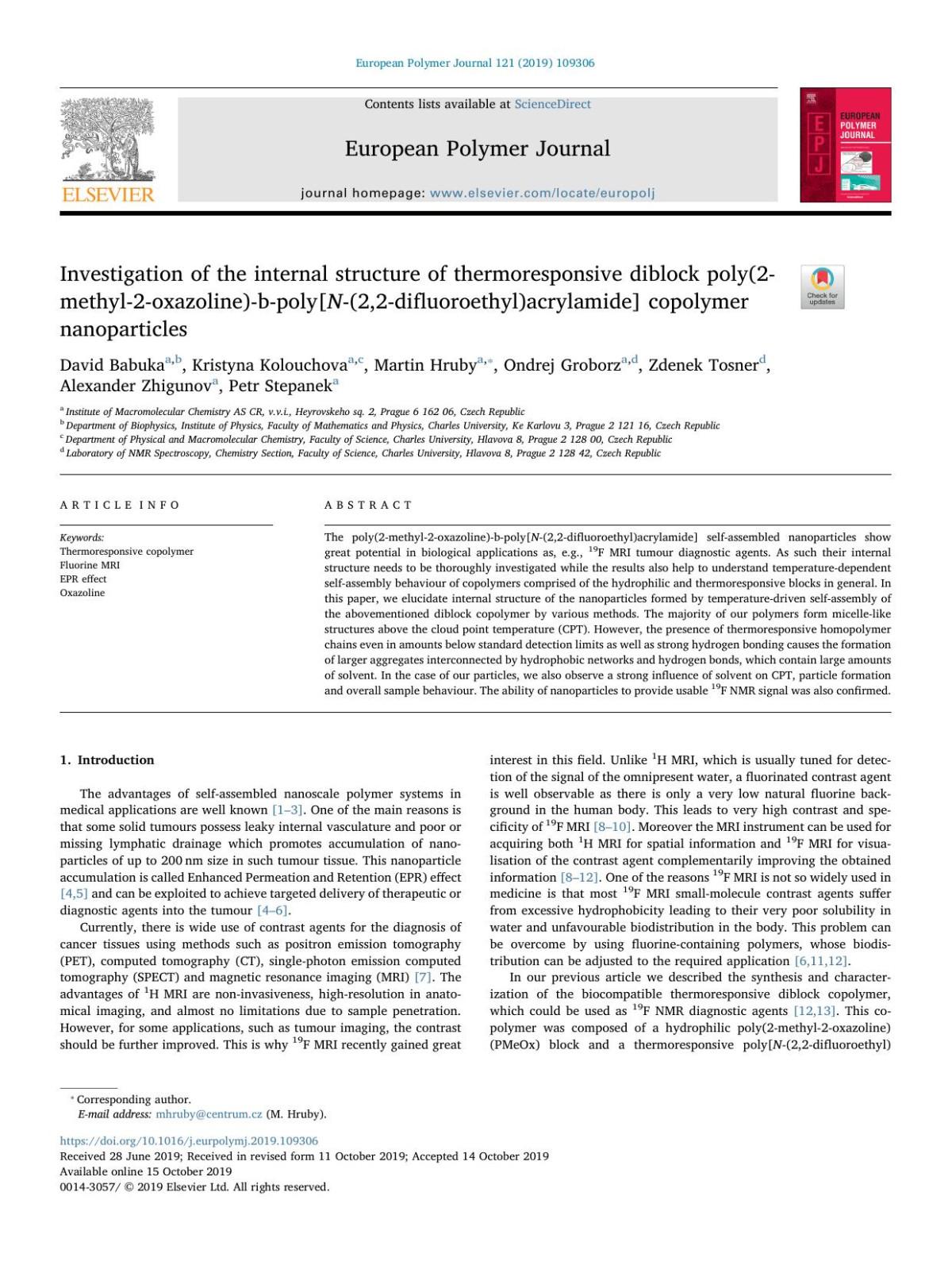
Download more ebook from https://ebookmass.com
More products digital (pdf, epub, mobi) instant download maybe you interests ...

American Poly Christopher M. Gleason
https://ebookmass.com/product/american-poly-christopher-mgleason/

Criminal Investigation 11th Edition PDF (eTextbook)
https://ebookmass.com/product/criminal-investigation-11thedition-pdf-etextbook/
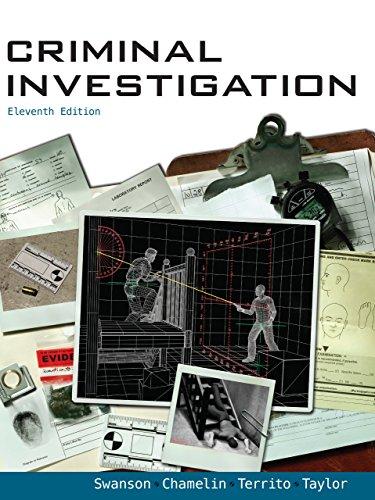
Criminal Investigation 11th Edition – Ebook PDF Version
https://ebookmass.com/product/criminal-investigation-11thedition-ebook-pdf-version/

The Palgrave Handbook of Organizational Change Thinkers 2nd Edition David B. Szabla
https://ebookmass.com/product/the-palgrave-handbook-oforganizational-change-thinkers-2nd-edition-david-b-szabla/

Harrisonu2019s Principles of Internal Medicine 19/E (Vol.1 & Vol.2) 19th Edition
https://ebookmass.com/product/harrisons-principles-of-internalmedicine-19-e-vol-1-vol-2-19th-edition/

Trapped: Brides of the Kindred Book 29 Faith Anderson
https://ebookmass.com/product/trapped-brides-of-the-kindredbook-29-faith-anderson/

Science and Applications of Nanoparticles Wagar Ahmed
https://ebookmass.com/product/science-and-applications-ofnanoparticles-wagar-ahmed/
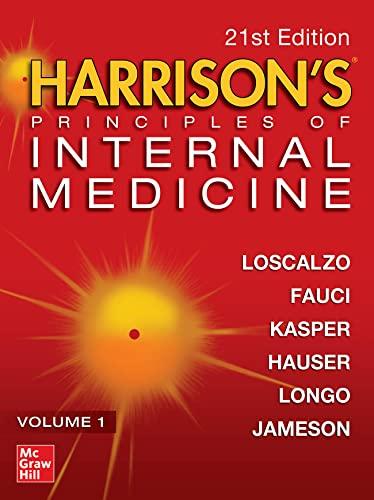
Harrison's Principles of Internal Medicine, TwentyFirst Edition (Vol.1 & Vol.2) Joseph Loscalzo
https://ebookmass.com/product/harrisons-principles-of-internalmedicine-twenty-first-edition-vol-1-vol-2-joseph-loscalzo/

Living with Art (B&b Art) 11th Edition – Ebook PDF
Version
https://ebookmass.com/product/living-with-art-bb-art-11thedition-ebook-pdf-version/
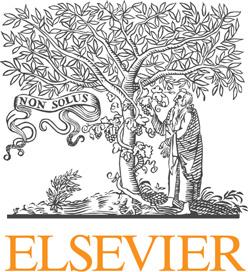
EuropeanPolymerJournal121(2019)109306
Contentslistsavailableat ScienceDirect
EuropeanPolymerJournal
journalhomepage: www.elsevier.com/locate/europolj
Investigationoftheinternalstructureofthermoresponsivediblockpoly(2methyl-2-oxazoline)-b-poly[ N-(2,2-difluoroethyl)acrylamide]copolymer nanoparticles
DavidBabukaa,b,KristynaKolouchovaa,c,MartinHrubya,⁎,OndrejGroborza,d,ZdenekTosnerd, AlexanderZhigunova,PetrStepaneka
a InstituteofMacromolecularChemistryASCR,v.v.i.,Heyrovskehosq.2,Prague616206,CzechRepublic
b DepartmentofBiophysics,InstituteofPhysics,FacultyofMathematicsandPhysics,CharlesUniversity,KeKarlovu3,Prague212116,CzechRepublic
c DepartmentofPhysicalandMacromolecularChemistry,FacultyofScience,CharlesUniversity,Hlavova8,Prague212800,CzechRepublic
d LaboratoryofNMRSpectroscopy,ChemistrySection,FacultyofScience,CharlesUniversity,Hlavova8,Prague212842,CzechRepublic
ARTICLEINFO
Keywords:
Thermoresponsivecopolymer
FluorineMRI
EPReffect
Oxazoline


ABSTRACT
Thepoly(2-methyl-2-oxazoline)-b-poly[ N-(2,2-difluoroethyl)acrylamide]self-assemblednanoparticlesshow greatpotentialinbiologicalapplicationsas,e.g., 19FMRItumourdiagnosticagents.Assuchtheirinternal structureneedstobethoroughlyinvestigatedwhiletheresultsalsohelptounderstandtemperature-dependent self-assemblybehaviourofcopolymerscomprisedofthehydrophilicandthermoresponsiveblocksingeneral.In thispaper,weelucidateinternalstructureofthenanoparticlesformedbytemperature-drivenself-assemblyof theabovementioneddiblockcopolymerbyvariousmethods.Themajorityofourpolymersformmicelle-like structuresabovethecloudpointtemperature(CPT).However,thepresenceofthermoresponsivehomopolymer chainseveninamountsbelowstandarddetectionlimitsaswellasstronghydrogenbondingcausestheformation oflargeraggregatesinterconnectedbyhydrophobicnetworksandhydrogenbonds,whichcontainlargeamounts ofsolvent.Inthecaseofourparticles,wealsoobserveastronginfluenceofsolventonCPT,particleformation andoverallsamplebehaviour.Theabilityofnanoparticlestoprovideusable 19FNMRsignalwasalsoconfirmed.
1.Introduction
Theadvantagesofself-assemblednanoscalepolymersystemsin medicalapplicationsarewellknown [1–3].Oneofthemainreasonsis thatsomesolidtumourspossessleakyinternalvasculatureandpooror missinglymphaticdrainagewhichpromotesaccumulationofnanoparticlesofupto200nmsizeinsuchtumourtissue.Thisnanoparticle accumulationiscalledEnhancedPermeationandRetention(EPR)effect [4,5] andcanbeexploitedtoachievetargeteddeliveryoftherapeuticor diagnosticagentsintothetumour [4–6]
Currently,thereiswideuseofcontrastagentsforthediagnosisof cancertissuesusingmethodssuchaspositronemissiontomography (PET),computedtomography(CT),single-photonemissioncomputed tomography(SPECT)andmagneticresonanceimaging(MRI) [7].The advantagesof 1HMRIarenon-invasiveness,high-resolutioninanatomicalimaging,andalmostnolimitationsduetosamplepenetration. However,forsomeapplications,suchastumourimaging,thecontrast shouldbefurtherimproved.Thisiswhy 19FMRIrecentlygainedgreat
⁎ Correspondingauthor.
E-mailaddress: mhruby@centrum.cz (M.Hruby).
https://doi.org/10.1016/j.eurpolymj.2019.109306
interestinthis field.Unlike 1HMRI,whichisusuallytunedfordetectionofthesignaloftheomnipresentwater,a fluorinatedcontrastagent iswellobservableasthereisonlyaverylownatural fluorinebackgroundinthehumanbody.Thisleadstoveryhighcontrastandspecificityof 19FMRI [8–10].MoreovertheMRIinstrumentcanbeusedfor acquiringboth 1HMRIforspatialinformationand 19FMRIforvisualisationofthecontrastagentcomplementarilyimprovingtheobtained information [8–12].Oneofthereasons 19FMRIisnotsowidelyusedin medicineisthatmost 19FMRIsmall-moleculecontrastagentssuffer fromexcessivehydrophobicityleadingtotheirverypoorsolubilityin waterandunfavourablebiodistributioninthebody.Thisproblemcan beovercomebyusing fluorine-containingpolymers,whosebiodistributioncanbeadjustedtotherequiredapplication [6,11,12].
Inourpreviousarticlewedescribedthesynthesisandcharacterizationofthebiocompatiblethermoresponsivediblockcopolymer, whichcouldbeusedas 19FNMRdiagnosticagents [12,13].Thiscopolymerwascomposedofahydrophilicpoly(2-methyl-2-oxazoline) (PMeOx)blockandathermoresponsivepoly[N-(2,2-di fluoroethyl)
Received28June2019;Receivedinrevisedform11October2019;Accepted14October2019
Availableonline15October2019
0014-3057/©2019ElsevierLtd.Allrightsreserved.
acrylamide](PDFEA)block.Theuseofthermosensitivepolymersexhibitingalowercriticalsolutiontemperature(LCST) [14] isandappealingstrategyhowtopreparenanoparticles.Thesepolymerś hydrophobicityincreaseswithtemperature,whichmeansweobtainparticles uponheatinginaqueoussolutionwithoutusinganyadditionalnanoprecipitationmethods.Moreover,wedescribedhighsuitabilityofthese polymersforapplicationin 19FMRI.Duetohighloadingofmagneticallyequivalentatomsof fluorineinpolymer(18.7wt.%),weobtain highintensitysignalinrelativelyshorttimeandlowconcentrations [12,13].InourpreviousresearchtheobtainedparticleswerecharacterizedusingDLSandSLSexperiments,whichgaveusapossible imageoftheirinternalstructure.
Inthisstudy,wefocusonuncoveringtheinternalstructureofour self-assembledpolymerparticleswithgreaterprecision,asitisoneof thedeterminingfactorsfortheirabilitytocarrydrugsanditinfluences theirbehaviourinthebody.Wepresentinthiscontributionadetailed investigationoftheirstructuralpropertiesutilizingvariousphysical methodsincludingdynamiclightscattering,smallanglex-rayscattering,smallangleneutronscatteringand 1H, 13Cand 19FNMRspectroscopyincludingDOSYandNOESYexperiments.Theobtainedresults anddescribedmethodsareofgreatapplicabilityalsoforothernanoparticlescomposedofblockcopolymerswithhydrophilicandthermoresponsiveblocks.
2.Materialsandmethods
2.1.Materials
Phosphate-bufferedsaline(PBS) – Sigma-Aldrichs.r.o.,Lot# SLBW7839,D2O(99.90%) – Eurisotop,Lot#R0991,Milli-Qwater (frominhouse filtrationunit).
Diblockcopolymerpoly(2-methyl-2-oxazoline)-block-poly[ N-(2,2difluoroethyl)acrylamide](MF)waspreparedbycationicpolymerisationof2-methyl-2-oxazolineterminatedwithchaintransferagent (CTA)functionalgroupfollowedbyRAFTpolymerisationofPDFEA. Thesynthesisschemeisdepictedin Fig.1
ThemolarmassesofindividualhomopolymerblocksPMeOxand PDFEAofinvestigatedcopolymerwere8.1kDaand16.4kDa,respectively,bringingthetotalmolarmassofthecopolymerto24.5kDa.The dispersityofthecopolymerhasbeendeterminedas1.08 [13]
2.2.Dynamiclightscattering(DLS)
Forourprimaryanalysisofsizedistributionandthermalresponseof oursystemweutilizedZetasizerNanoseriesNano-ZSinstrument, ModelZEN3600(MalvernInstruments,UK).Thescatteringanglewas θ =173°.ThemeasurementswerecarriedoutinH2O,D2OandPBS withpolymerconcentrationof1mg/mlandtemperaturerangeof10°C to50°C.Weusedsemi-microcuvettesaslowersamplevolumeprovides betterconditionsforthermalequilibration.Themeasurementposition wassetto2mm,whichputsthefocalpointatabout1mmbehindthe cellwallandsignificantlydecreasesthedetrimentaleffectsofmultiple
scatteringonmeasurement.Thetemperaturetrendsweremeasuredin thefollowingsetting:Thesamplewas firstallowedtostabilizeat10°C for25min.Afterthisstabilizationthetemperaturewasprogressively increasedupto50°Cwithastepof1°C.Ateachstepthesamplewas allowedtoequilibrateitstemperaturefor5minandthenthescattering datawerecollectedfor5min.Aftermeasuringthesampleat50°Cthe temperaturewasreducedbackto10°Candafterthemeasurement chamberreachedthistemperatureweimmediatelystartedcollecting scatteringdata.Theacquisitiontimewassetto5minandwaitingtime betweenmeasurementswassetto5minaswell.Atthismeasurement stepwecollectedatotalof31measurementswhichtookapproximately 5hofmeasurementtime(accountingfortheautomaticbeamintensity optimization).Thiswascarriedouttoanalysethereversibilityof thermallycausedassemblyinoursystem.
Themeasureddatawerethenanalysedusingaseriesofprogrammes (Zetasizersoftware,ExcelandMatlabaswellastwoinhousesoftwares JMalgenandGenr)toobtainintensitysizedistributions.FirsttheobtainedresultswereexportedintextformatfromtheZetasizersoftware. ThesedatawerethenformattedusingJMalgen.Genrwasusedonthe obtained filestocalculatetheactualsizedistributionswhichwerethen plottedusingMatlabsoftwareandanalysednumericallyinExcel.
Theintensity-basedsizedistributionsdirectlyreflectmeasured scatteringintensities.Becausethescatteringintensity Is isdirectly proportionaltothethirdpowerofparticle’ssizelargerparticlesscatter muchmorelightthansmallerparticles.Thusinintensity-basedsize distributionslargerparticlesmightseemtobeprevalentoverthe smallerparticles.However,inreality,thesmallerparticlesmightconstitutemajorityofthesamplemass.Ofcourseonecouldattemptto representthisbyrecalculatingtheobtainedintensitydistributionsto volumeornumberdistributionshoweverthiscarrieswithittheriskof introducingerrorofsuchmagnitudethatonewouldloseimportantdata intheprocess.Thusitisbettertorepresentdataobtainedfromdynamic lightscatteringasintensitybasedsizedistributionsandkeepinmind thatpopulationsofsmallerparticleshavesubstantialpresenceinthe sampleeventhoughtheirpeaksmightseemmuchsmallerthanthoseof largerparticles.
Becausewemeasuredoursizedistributionatarangeoftemperaturesbyobtainingthesizedistributionsforvarioustemperatureswe intrinsicallyobtainedalsothecloudpointtemperatures(CPT).
2.3.Small-angleandwide-angleX-rayscattering(SAXS/WAXS)
SAXSandWAXSexperimentswereperformedusingapinhole camera(MolMet,Rigaku,Japan,modifiedbySAXSLAB/Xenocs)attachedtoamicrofocusedX-raybeamgenerator(RigakuMicroMax003) operatingat50kVand0.6mA(30W).Thecamerawasequippedwitha vacuumversionofPilatus300Kdetector.Calibrationofprimarybeam positionandsample-to-detectordistanceswasperformedusing AgBehenatesample.Forthemeasurementssamplesweresealedinto borosilicatecapillaries.Twoexperimentalsetupswereusedtocoverthe q rangeof0.005 – 1.1Å 1.Scatteringvector, q,isdefinedas q=(4π/ λ)sinΘ,where λ isthewavelengthand2Θ isthescatteringangle.

Fig.1. SynthesisofdiblockcopolymerMFwithpoly(2-methyl-2-oxazoline)(PMeOx)ashydrophilicblockandN-(2,2-difluoroethyl)-acrylamide(PDFEA)asthermoresponsive fluorinatedblock.NsO intheschemeisa4-nitrobenzylsulfonateanion.
Samplesweremeasuredattwodifferenttemperatures:22°Cand40°C. HomemadesoftwarebasedonPyFAIPythonlibrary [15] wasusedfor datareduction.SASFit [16] andSASView [17] softwarewasusedfor fittingofexperimentaldata.
2.4.Small-angleneutronscattering(SANS)
Thesmallangleneutronscatteringexperimentswerecarriedoutat RutherfordAppletonLaboratory,ISIS,UKoninstrumentSANS2d.The incidentneutronwavelengthswereintherangeof2.0–14.0Å.Theused sample-detectordistanceswere4and12mprovidinguswithaQrange of0.00416–0.72191A 1 fordetectordistanceof4mand 0.00156–0.98157A 1 fordetectordistanceof12m.Thedatawere collectedattwo 3He-CF4 filledORDELAdetectorswithanactiveareaof morethan1.86m2 andresolutionof5mm.MeasureddatawerecorrectedwithreferencetoemptycellandD2O.Theywerethenprocessed usingMantidsoftware,version3.13.0,(Mantid DataanalysisandvisualizationpackageforneutronscatteringandSRexperiments)andanalyzedwithSASfitsoftware,version0.94.10 [16].
2.5.Nuclearmagneticresonance(NMR)
ForNMRmeasurements,2mgofpolymerweredissolvedin1mlof H2O/D2O(volumeratio90%/10%)inordertomaintaindeuterium field-frequencylockandtokeepexchangeableamideprotonsobservable.Thedominantwatersignalwassuppressedusingexcitation sculptingmethod [18],in1Dproton,DOSY,and2DNOESYspectra. MixingtimeintheNOESYexperimentwassetto100ms.Multiplicity edited 1H–13CHSQCexperimentwasmeasuredinordertoconfirmthe spectralassignment.AllspectrawereacquiredonBrukerAvanceIII NMRspectrometeroperatingatthe 1Hresonancefrequencyof600MHz andusingthecryogenicallycooledprobe.Sampletemperaturewas calibratedusingaperdeuteratedmethanolsample [19] andstabilized for15minpriortoeachmeasurement.Thechemicalshiftwascalibratedusingtemperaturedependentpositionofwatersignalaccording toreference [20] 19FNMRspectraweremeasuredusingBrukerAvance IIIHDspectrometerwith 19Fresonancefrequencyof376.5MHzwhile 19F T1 relaxationtimesweredeterminedusingVarianNMRSystemat theresonancefrequencyof282.2MHz.
3.Results
Temperaturedependenceofsizedistributionsoftheinvestigated copolymerwasmeasuredbyDLS.Wecarriedoutourmeasurementsin severalsolvents(H2O,D2O,andPBS)toaccountfordifferentsolvents requiredforvariousexperimentalmethodsandbiologicalrelevance. TheresultsinD2OwereanimportantreferenceforourSANSmeasurementswhichwediscusslaterandcombinationofH2OandD2O resultswereusedasareferenceforNMRmeasurements.Theimportanceoftheseconsiderationsiswelldocumentedin [21–24].
FromDLSmeasurementsweobtainedintensitydistributionsof Rh andcloudpointtemperatures(CPT)atwhichthepolymers,whichwere almostexclusivelymolecularlydissolved(representedbyparticlepopulationI),startedtoaggregateintolargerassemblies(representedby particlepopulations1,2and3)andformparticles.Wealsoconfirmed thatthethermallyinducedself-assemblyisreversibleinallusedsolventsaftercoolingthesystembackbelowtheCPT.
Fromintensitysizedistributionsdepictedin Fig.2,weobserve anomalousmicellizationatCPTasanimmediateincreaseinscattering intensityandparticlesize,whichgetslowerafterfurthertemperature increase.Thiswouldsuggestthateventhoughourcopolymerchains haveverylowpolydispersityof1.08 [13] therearealsosometrace amountsofhomopolymerspresent,whichcausethiseffect [25]
Itisalsoevidentthatoursystemformsseveralparticlepopulations belowaswellasaboveCPT.Thesepopulationsvaryslightlyacrossthe usedsolventshowevergiventhewidthoftheindividualpeakstheyare
almostidentical.InterestinglyinD2O,weobserveanadditionalpopulationbelowtheCPTandinPBSweobserveanotherpopulationabove CPTaswell.Thecentralsizesoftheindividualparticlepopulationsare listedin Table1.Asdiscussedabovegiventhatthelargerparticles scatterlightwithhigherintensitythansmallerparticlesitfollowsthat thepopulationsIand1containthemajorityofpolymermassbelowand aboveCPT,respectively,andpopulationsIIand2containmoreparticlesthanpopulationsIIIand3,respectively,iftheyarepresentinthe sample.
Itisalsoimportanttonotethatourcopolymerrespondedstronglyto changesinsolventpolarityandcomposition,whichmanifestedbya shiftofCPTfrom33°CinH2Oto31°CinPBSandto25°CinD2O.
WefurtherinvestigatedparticlesformedinPBSbySAXSexperimentswhichprovidedmoreinformationaboutparticlesinpopulation 1.Ascanbeseenfromthescatteringintensityprofilein Fig.3 ofour sampleaboveCPTweareobservingquiteacomplexstateofthe polymerchains.
Atlowertemperature,weareobservingintensityupraiseinthelowq rangewhichisanindicationofthepresenceoflargerobjects.This correlateswellwithDLSmeasurementswhichshowthatportionof presentcopolymerformslargeraggregatesevenatlowertemperatures. Theseaggregatesarehowevertoobigforanalysisusingcurrentdataset. Inordertodescribehigher q-rangedataatlowertemperatures,wehave usedgeneralizedGaussiancoilfunction.ThesampleexhibitsFloryexponentaround0.52whichisinagreementwithSANSdataandmeans thatthecopolymerisinagoodsolventwithratherrelaxedandwellsolvatedchains.ThecalculatedradiusofgyrationforpopulationIis 12.07±0.13nm.GiventhewidthofDLSdistributionsanddifference between Rg and Rh thisisingoodagreementwithpreviousresults.
Whileincreasedtemperaturegenerallyleadstomore flexiblechain movementincaseofPDFEAblocksinaqueousmediathisdoesnothold trueastheybecomemorehydrophobicleadingtotheformationof condensedstructures.Theoverallbehaviourcouldbedescribedasa loosesphereofradius15±1nmwithaninternalstructurerepresentedbyGaussianchains.Theradiusofgyrationofinternalcoilsis 1.3±0.7nm.BasedoncomparisonwithDLSresultsweestimatethese measuredparticlesbelongtopopulation1.
Alargeamountofsolventinsideoursphericalobjectswasconfirmedbycalculationofswellingdegree:
= Q MVMP MV ()() () ·100% ww w where Mw(V) ismolecularweightcalculatedfromtheparticlevolume and Mw(P) isthemolecularweightoftheswollenparticlecalculated fromthescatteringcurve.
= M VVdN ()·· w a with d beingabulkdensityand Na isAvogadro’snumber.Thatgaveus Mw(V) =1.47 107 g/mol.
Mw(P) wascalculatedusingtheclassicalequationformolecular weightdetermination:
= M P I c N b () (0) Δ w a 2
where I(0) isintensityextrapolatedto q =0, c isconcentrationand Δb isexcessscatteringamplitude.
Whileexcessscatteringamplitudecouldbecalculatedfromtheory itsvalueisstronglydependentonpolymerdensity.Thustheexperimentalapproachisamoresuitablemethodforitsdeterminationinthis case.
Ashasbeenshownin [26] wecanutilizeaconcentrationseries measurementtocalculateexcessscatteringamplitude.Integralintensitiesversusconcentrationforoursampleareshownin Fig.4.The slopeofthelineisequalto Δb2,1.09 1021 cm2/g2.Intensityextrapolatedto q =0isI(0)/c=5392cm2/g.Thuswehaveobtained Mw(P) =3 106 g/molandfromtheequation,for Q weobtainthe
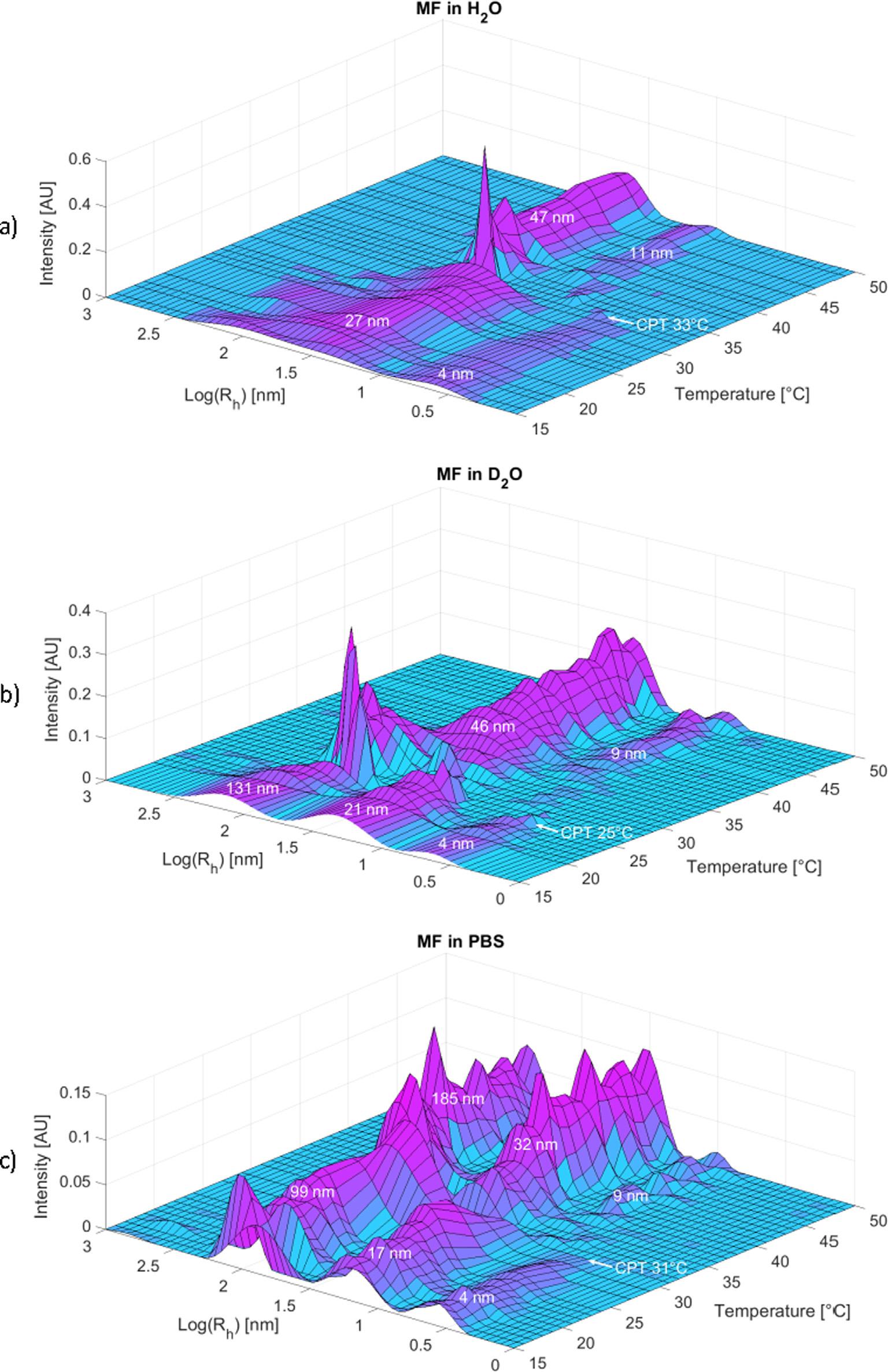
Fig.2. Temperaturedependenceofintensitydistributionsof Rh obtainedfromDLSofourMFsamplein(a)H2O,(b)D2O,and(c)PBS.
swellingdegreeofalmost80%.GiventhecalculatedRg =15±1nm and Mw(P) =3 106 g/mol,wedeterminedtheaggregationnumberof particlesinpopulation1asNagg =122.Thissuggeststhatparticlesin population1shouldbemicellesastheirradiusofgyration Rg,swelling Q andaggregationnumber Nagg allsupportthishypothesis.
ThemeasuredSANSdatawereanalysedsimilarlytotheSAXSdata astheyneededtobe fittedbytwocombinedmodelstodescribeour scatteringcurveswithreasonablereliability.Fromthisanalysiswe
obtainedsizesthatareinagoodagreementwiththeSAXSresults, especiallyconsideringtheinfluenceofdifferentsolvent(PBSforSAXS vsD2OforSANS)onourpolymer’sbehaviour.
AdditionallyweobtaineddataontheevolutionofFloryexponent ν ofthepresentpolymercoilswithincreasingtemperaturefrom ν =0.560at15°Cto ν =0.368at42°C.Thegraphicaldepictionis shownin Fig.5.Thisshiftisinaccordancewithgeneralpolymertheory whichpredictsFloryexponentof ν =0.6forpolymerchainsingood
Table1
Centralhydrodynamicradiiofparticlepopulationspresentinoursamples acrossmeasuredtemperaturerangeandobservedCPTsinH2O,D2O,andPBS.
ParticlepopulationRh [nm]
H2O4 27 – 1147 – 33
D2O 421131946 – 25 PBS 4179993218531
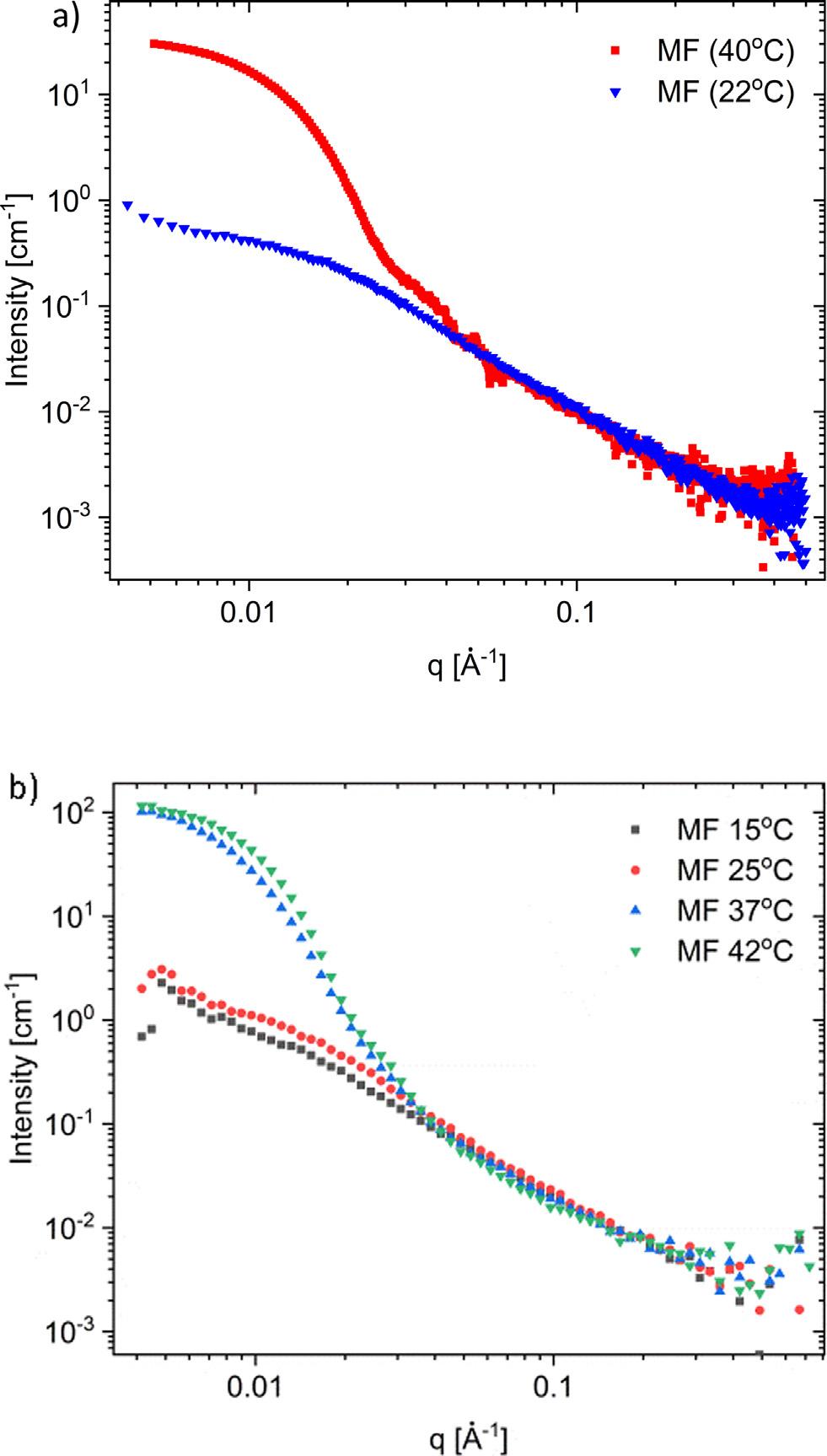
Fig.3. (a)Small-angleX-rayscattering(SAXS)and(b)small-angleneutron scattering(SANS)intensitiesasafunctionofthescatteringvector.
solventand ν =0.3forpolymerchainsinapoorsolvent.Thismeans thePDFEAblockishydrophilicwhilethesampleisatalowertemperature(belowCPT)andbecomesmorehydrophobicasthetemperaturerises.
Toobtaininformationaboutoursystemonatomiclevelacrossa rangeoftemperatureswecarriedoutawidesetofNMRexperiments. Theseexperimentswereperformedasdescribedintheexperimental section.
ProtonsignalsofPDFEAandPMeOxblocksinMFsampleswere assignedasdisplayedin Fig.6.Signalintensitiesin 1HNMRspectra
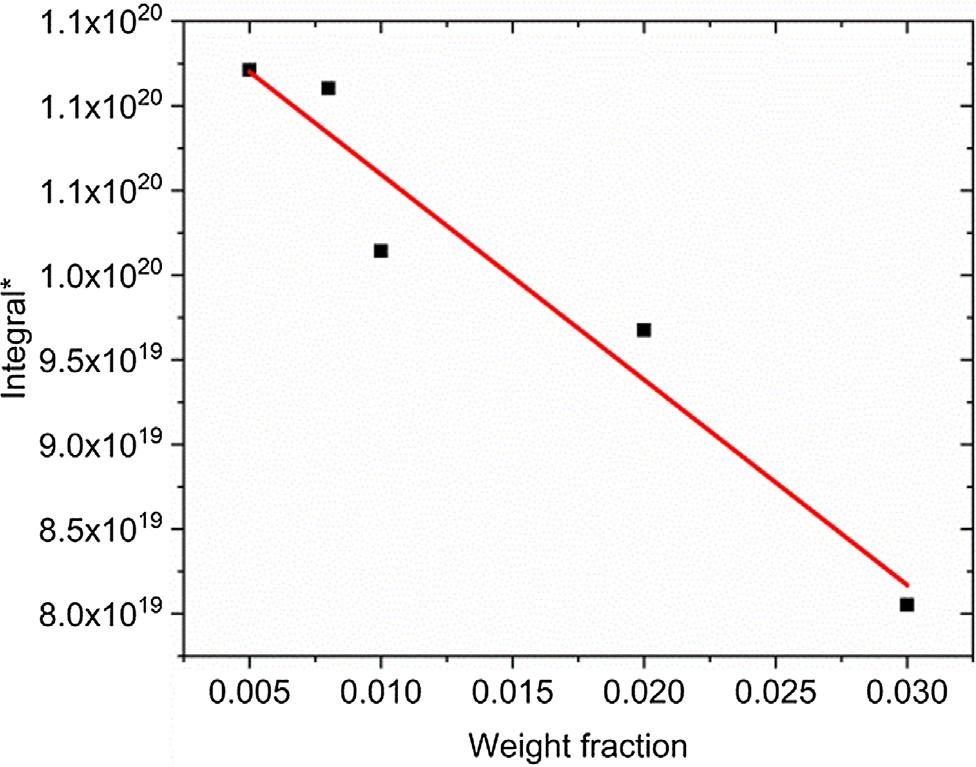
Fig.4. ConcentrationdependenceofintegratedSAXSintensities(Integral*).

Fig.5. EvolutionofFloryexponent ν withrisingtemperatureascalculatedfrom SANSexperiments.
weremonitoredasafunctionofincreasingtemperatureanddataof integralintensitiesarepresentedin Fig.7.Generallyitholdstruethat whenapolymercollapsesandformslargecondensedparticlesitsNMR signaldisappearsandonlythedissolvedmobilepolymerchainsare observed.NMRspectroscopyprovidestheuniqueopportunitytofollow thisprocessattheatomiclevelwhenobservingsignalsofindividual hydrogenatomsinvolvedindifferentpartsofthepolymer.However,in ourcase,weobservedifferentbehaviourforindividualcopolymer blocks.WhilethesignalintensitiesofthethermoresponsivePDFEA blockdecreasedownto40%at45°C(comparedtointensitiesat25°C) thereisalmostnodecreaseinthehydrophilicPMeOxblockintensities (theapparentdecreaseiscausedmainlybytheoverlapofthePMeOx andPDFEAsignals).Thisbehaviourisgraphicallydocumentedin Fig.7.TheseresultssuggestthatthePDFEAblocksformthecondensed partoftheparticlespresentaboveCPTwhilethePMeOxblocks maintaintheir flexibility.
MeasuredNOESYspectrarevealthespatialproximityofhydrogen atomsthatareseparatedbynomorethan5Å(Fig.8).Weobservethat amideprotonsF3ofthePDFEAblockshowspatialproximitytoall otherprotonsofthisblock.InthecaseofPMeOxblock,thereislarge ambiguityduetotheoverlapofpeaksandthuswecannotreliablyclaim thepresenceorabsenceofinteractionsbetweenprotonsofthePMeOx blocks.Itisworthnotingthecross-peaksbetweenF3amidesandF1/F2 backboneprotonssuggestingclosepackingofthepolymer.ThusNOESY

Fig.6. SpectralassignmentofMFcopolymersample. 1Hspectrumacquiredat25°CinH2O/D2Omixture(volumeratio90%/10%)withassignedsignals.

Fig.7. NMRsignalintensitiesasafunctionoftemperature.

Fig.8. NOESYspectraacquiredat20°CinH2O/D2Omixture(volumeratio90%/10%).
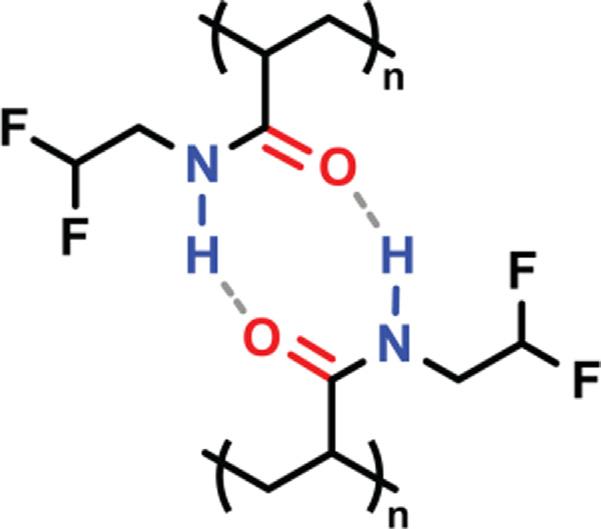
spectrademonstrateclosecontactofsidechainswiththebackbone. These findingssupportahydrogenbindingschemeasdepictedin Fig.9 – onesidechaincreateshydrogenbondswithanothersidechainand causesthePDFEAblockstostackclosertogether.Thisarrangement bringssidechainend-groupsclosertothebackboneandcreatestight packingofthermoresponsiveblocksinsidetheparticles.ThisinteractionisobservedevenbelowtheCPTwhichisinagreementwiththe observedpresenceofaggregatedparticlesbelowtheCPT.
Itisimportanttonotethatnointeractionbetweendifferentcopolymerblockswasobserved.Sidechainsinteractexclusivelybetweenthe blocksofthesametype.
Ourcopolymerparticlescouldpotentiallybeusedas 19FMR-imagingagent.Thereforeweacquired 19FNMRspectraaswell.Weobserve onebroadfeaturelesssignalatabout 122.7ppm.Thelinewidthis determinedbothbyrelaxationandspreadofchemicalshiftscoming fromdifferentlocalstructuresaroundtheCHF2 group.Spectraat45°C showdecreasedintegralintensitydownto80%whencomparedto temperature20°C.Thesevaluesarehigherthanthoseobtainedfrom 1H NMRspectraofCHF2 group.Inadditiontothedecreasedintegral,we observebroadeningatthesignalfootwhichsuggestsanothersignal componentwithshort T2 relaxationcorrespondingtobiggerparticles. Theobtained 19Fspectraaredepictedin Fig.10.Thedifferencebetween fluorineandprotonspectracanbeexplainedbyrelaxation propertiesof 19FatomsinCHF2 groupwhichdifferfrom 1Hatom. 19F NMRmayallowobservationofbiggerpolymeraggregatesthan 1HNMR spectroscopy. 19F T1 relaxationtimesweremeasuredbelow(at20°C)
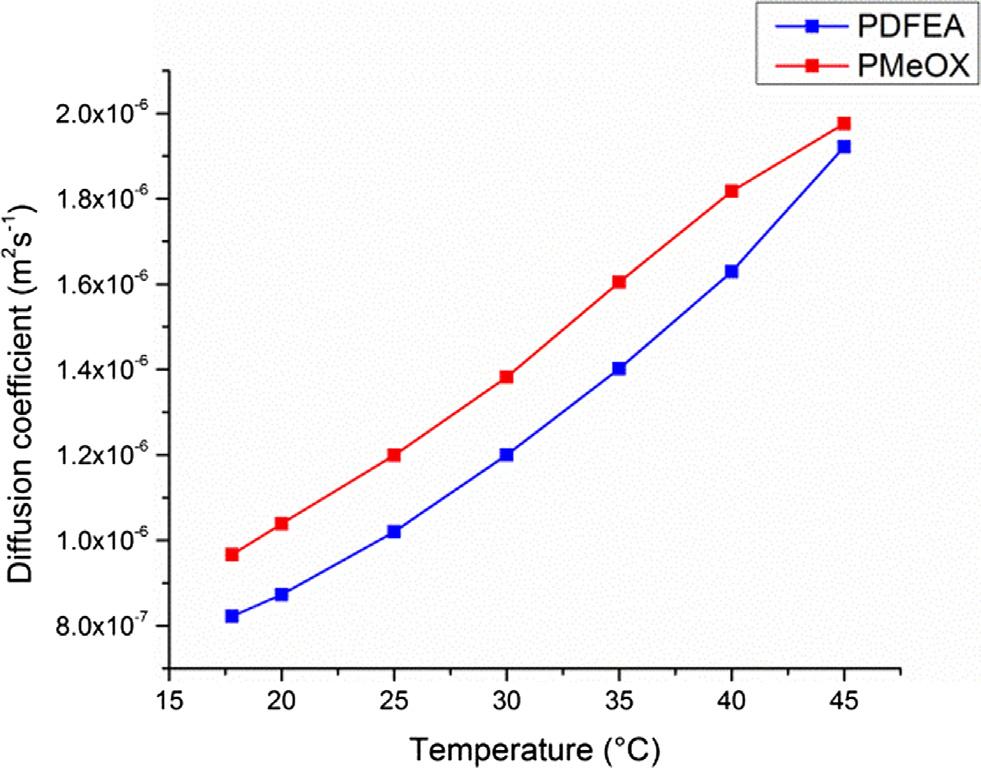
andabove(at45°C)theCPTusinginversionrecoverymethod.Inboth casesasingle-exponentialbehaviourwasobservedandyield T1 relaxationtimearound450ms.
Additionally,wemeasuredtranslationalself-diffusioncoefficients bymeansofpulsed fieldgradientNMRmethod.TheobtainedDOSY spectraprovideduswithanindependentmeasurementofdiffusion propertiesfeltbythecorrespondinghydrogenatomsandaredepicted in Fig.11.Whenamoleculemovesasawholeweshouldobtainthe samediffusionconstantforallitshydrogenatoms.Foroursystem,this holdstruewithinseparatepolymerblocks.MeasureddiffusionconstantsofPMeOxblockarehoweverlargerthanthoseforPDFEAblock.
WealsoobservethattheapparentdiffusioncoefficientofPDFEA blockacceleratesitsincreasewithtemperature.Asthetemperature increasesabovetheCPT,thePDFEAsignalsprovideinformationmainly aboutthenon-aggregatedpolymerparticlesasthe 1HsignalfromaggregatedPDFEAdecreasessignificantly.Thusathighertemperatures, therelativeamountofPDFEAblockswithunhinderedrelaxationincreases,whichchangestheratioofthesignaldetectedfromsmalland bigparticlesandtheapparentdiffusionconstantbecomeslargerwitha largerrelativeamountofsmallparticles.
Incontrast,theapparentdiffusioncoefficientofPMeOxslowsdown
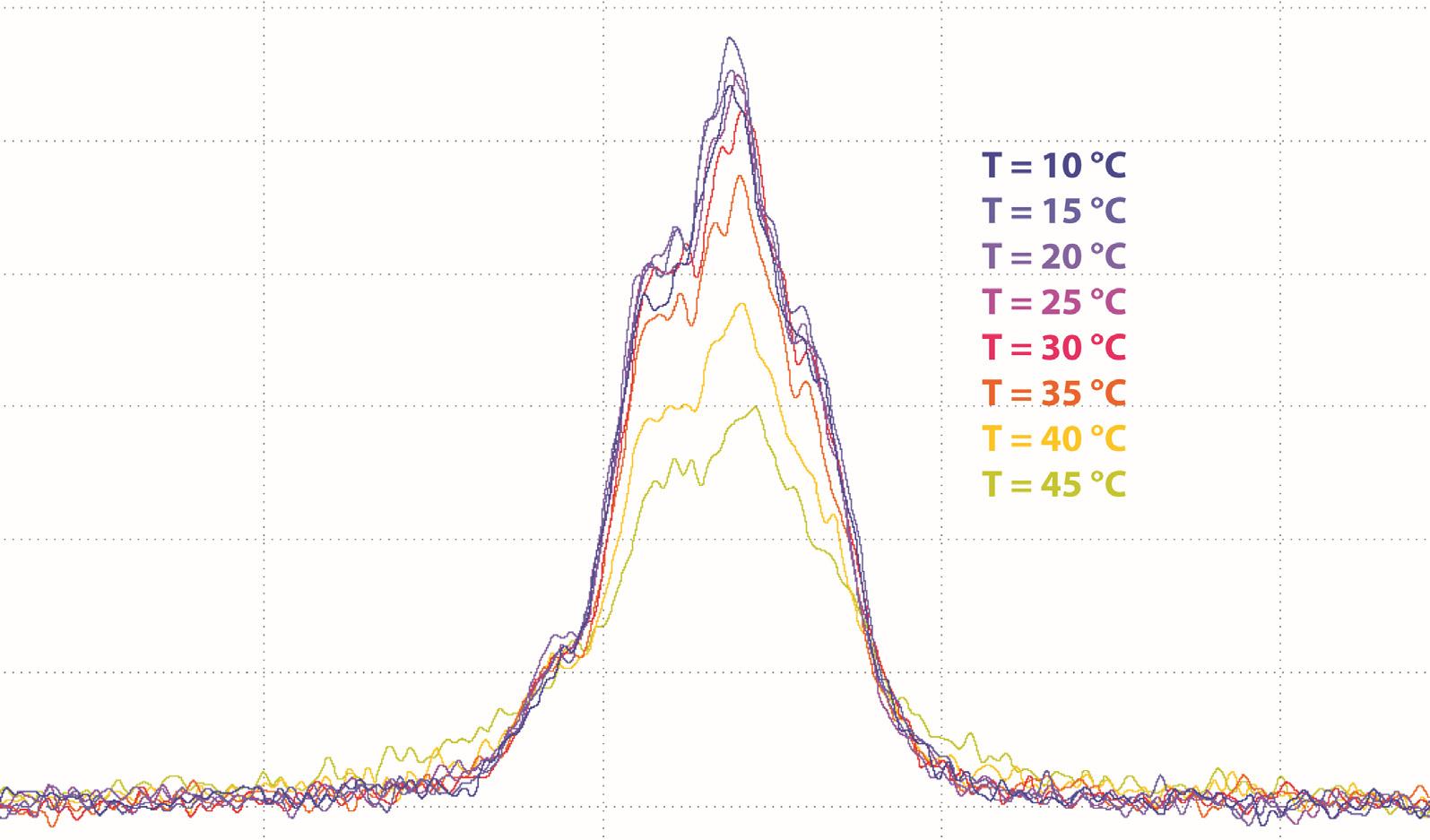
19FNMRspectraofMFcopolymeratdifferenttemperatures.Spectraathighertemperaturesshowincreasinglinewidth.
itsincreaseaboveCPT.ThiscanbeseenintheslowerdecreaseofintegralintensityofPMeOxin1Dprotonspectra(Fig.7)whencompared toPDFEAsignals.AttemperaturesabovetheCPTrelativenumberof aggregateswithslowdiffusionincreasesandasthePMeOxisstillwell observableevenintheaggregatesthisthenleadstotheloweringof apparentdiffusioncoefficients.ThusDOSYspectrafurtherconfirmour previousconclusionbasedonSAXSand1D 1HNMRmeasurementsthat thehydrophilicPMeOxblocksofourpolymerretaintheirmobilityand flexibilityevenwhentheybecomepartoftheparticles.
TheseresultcollectivelyshowthateventhoughthethermoresponsivePDFEAblocksformcondensedaggregateswhose 1HNMR signaldecreaseastheirmobilityisrestrictedinsidetheparticlestheir 19FNMRsignalexperiencesonlysmallerdecreaseandthusformed particlesshouldstillbeabletoprovidedetectable 19FNMRsignal, whichisingoodagreementwithresultsof invivo studyonmicewhich utilizedthesamecopolymer [12]
4.Conclusion
TheinvestigatedPMeOx-b-PDFEAthermo-responsivecopolymer wasshowntoformcomplexnanoparticularstructuresbothaboveand belowitsCPT.ApparentlyaboveCPT,thereexistsequilibriumbetween molecularlydissolvedpolymerchains,micelle-likestructures,and largeraggregates.Thelargeraggregatesaremostlikelypolymerchains assembledaroundfreehomopolymerresiduesleftoverfrompolymerization.Theformationoflargeraggregatesisthenstronglydictated bythesolventpropertiesasevidencedbyvaryingbehaviourindifferent solvents.
WeobservedtheabsenceofinteractionsbetweenPMeOxand PDFEAblocksaswellasastrongtendencytocreatehydrogenbonds betweenthecarboxyloxygenandamidegroupsofeachblockseparately.Furthermore,ourresultssuggestthatsomeformofaloosely formednetworkispresentinthepopulationsoflargerparticles.Thisis mostprobablyanetworkofhydrophobicblocksinterconnectedby hydrogenbondswhosehydrophobicityisforcingthemoutoftheaqueousenvironmentasdemonstratedbythecalculatedFloryexponents. Thisnetworkisthenprobablyshieldedbyhighlyswollenhydrophilic PMeOxchainswhicharebindinglargeamountsofwaterinsideintraparticularcompartmentsinsidewhichthehydrophilicchainscan behaveascoilsinagoodsolventassuggestedbySAXS.
Themeasurementsof 19FNMRsignalsuggestthatoursystemis capableofprovidingmeasurable fluorinesignalevenaboveCPTwhich meansthatour fluorinegroupsretainthecapabilitytoprovidethis signaleveninsidethecondensedparticles.This findingisfavourablefor possibleapplicationofoursystemas 19FMRIdiagnosticagent.There areother 19FMRIdiagnosticagentscapableofprovidingsignaleven underbodyconditionsbutthoseusuallysufferfrompoorbiodistribution.Howevertheblocknatureofoursystemenablesittobemodified to fitbiodistributionneedsofvariousapplicationsasisgenerallythe casewithself-assembledcopolymersystems.
Finallytheanalyticalmethodsandtheircollectiveapplicationdescribedinthispaperaregenerallyapplicableforothercopolymersystemsaswell.
DeclarationofCompetingInterest
Theauthorsdeclarethattheyhavenoknowncompeting financial interestsorpersonalrelationshipsthatcouldhaveappearedtoinfluencetheworkreportedinthispaper.
Acknowledgment
Theauthorsacknowledge financialsupportfromtheMinistryof Education,YouthandSportsoftheCzechRepublic(GrantINTER-COST #LTC19032).M.H.ThankstoCzechScienceFoundation(Grant#1901602S).P.S.ThankstoCzechScienceFoundation(Grant#18-
07983S).
KristynaKolouchovaacknowledges financialsupportfromGrant AgencyofCharlesUniversity(ProjectNo.602119).
WewouldalsoliketothankDrStephenKingforhelpontheSANS2d instrumentintheMaterialsCharacterisationLaboratoryattheISIS NeutronandMuonSource.
ThisworkbenefitedfromtheuseoftheSasViewapplication,originallydevelopedunderNSFAwardDMR-0520547.SasViewalso containscodedevelopedwithfundingfromtheEUHorizon2020programmeundertheSINE2020projectGrantNo654000.
References
[1] B.S.Bolu,R.Sanyal,A.Sanyal,Drugdeliverysystemsfromself-assemblyofdendronpolymerconjugates,Molecules23(7)(2018)26
[2] C.T.Cheng,G.Castro,C.H.Liu,P.Lau,Advancednanotechnology:anarsenaltoenhance immunotherapyin fightingcancer,Clin.Chim.Acta492(2019)12–19
[3] A.Jain,R.Kumari,A.Tiwari,A.Verma,A.Tripathi,A.Shrivastava,S.K.Jain, Nanocarrierbasedadvancesindrugdeliverytotumor:anoverview,Curr.DrugTargets 19(13)(2018)1498–1518
[4] D.Kalyane,N.Raval,R.Maheshwari,V.Tambe,K.Kalia,R.K.Tekade,Employmentof enhancedpermeabilityandretentioneffect(EPR):nanoparticle-basedprecisiontoolsfor targetingoftherapeuticanddiagnosticagentincancer,Mater.Sci.Eng.C-Mater.Biol. Appl.98(2019)1252–1276
[5] O.M.Kutova,E.L.Guryev,E.A.Sokolova,R.Alzeibak,I.V.Balalaeva,Targeteddeliveryto tumors:multidirectionalstrategiestoimprovetreatmentefficiency,Cancers11(1) (2019)33
[6] M.M.Bailey,S.R.Kline,M.D.Anderson,J.L.Staymates,C.Berkland,Chemicallymodifiable fluorinatedcopolymernanoparticlesfor19F-MRIcontrastenhancement,J.Appl. Polym.Sci.126(4)(2012)1218–1227
[7] S.Y.Nam,L.M.Ricles,L.J.Suggs,S.Y.Emelianov,Imagingstrategiesfortissueengineeringapplications,TissueEng.PartB-Rev.21(1)(2015)88–102
[8] C.K.Fu,J.Tang,A.D.Pye,T.Q.Liu,C.Zhang,X.Tan,F.Han,H.Peng,A.K.Whittaker, Fluorinatedglycopolymersasreduction-responsiveF-19MRIagentsfortargetedimaging ofcancer,Biomacromolecules20(5)(2019)2043–2050
[9] C.Zhang,S.S.Moonshi,W.Q.Wang,H.T.Ta,Y.X.Han,F.Y.Han,H.Peng,P.Kral, B.E.Rolfe,J.J.Gooding,K.Gaus,A.K.Whittaker,HighF-contentperfluoropolyetherbasednanoparticlesfortargeteddetectionofbreastcancerbyF-19magneticresonance andopticalimaging,ACSNano12(9)(2018)9162–9176
[10] C.Zhang,R.J.P.Sanchez,C.K.Fu,R.Clayden-Zabik,H.Peng,K.Kempe,A.K.Whittaker, ImportanceofthermallyinducedaggregationonF-19magneticresonanceimagingof perfluoropolyether-basedcomb-shapedpoly(2-oxazoline)s,Biomacromolecules20(1) (2019)365–374
[11] O.Sedlacek,D.Jirak,A.Galisova,E.Jager,J.E.Laaser,T.P.Lodge,P.Stepanek, M.Hruby,F-19magneticresonanceimagingofinjectablepolymericimplantswith multiresponsivebehavior,Chem.Mater.30(15)(2018)4892–4896
[12] D.Jirak,A.Galisova,K.Kolouchova,D.Babuka,M.Hruby,Fluorinepolymerprobesfor magneticresonanceimaging:quovadis?Magn.Reson.Mater.Phys.,Biol.Med.32(1) (2019)173–185
[13] K.Kolouchova,O.Sedlacek,D.Jirak,D.Babuka,J.Blahut,J.Kotek,M.Vit,J.Trousil, R.Konefal,O.Janouskova,B.Podhorska,M.Slouf,M.Hruby,Self-assembledthermoresponsivepolymericnanogelsforF-19MRimaging,Biomacromolecules19(8)(2018) 3515–3524
[14] A.Gandhi,A.Paul,S.O.Sen,K.K.Sen,Studiesonthermoresponsivepolymers:phase behaviour,drugdeliveryandbiomedicalapplications,AsianJ.Pharm.Sci.10(2)(2015) 99–107
[15] J.Kieffer, D.Karkoulis,PyFAI,aversatilelibraryforazimuthalregrouping,11th InternationalConferenceonSynchrotronRadiationInstrumentation(SRI),IopPublishing Ltd,Lyon,FRANCE,2012
[16] I.Bressler,J.Kohlbrecher,A.F.Thunemann,SASfit:atoolforsmall-anglescatteringdata analysisusingalibraryofanalyticalexpressions,J.Appl.Crystallogr.48(2015) 1587–1598
[17]e.a.M.Doucet,SasViewVersion4.1.2,http://doi.org/10.5281/zenodo.825675.
[18] T.L.Hwang,A.J.Shaka,Watersuppressionthatworks.Excitationsculptingusingarbitrarywave-formsandpulsed-fieldgradients,J.Magn.Reson.,SeriesA(1995)275–279
[19] M.Findeisen,T.Brand,S.Berger,AH-1-NMRthermometersuitableforcryoprobes, Magn.Reson.Chem.45(2)(2007)175–178
[20] D.S.Wishart,C.G.Bigam,J.Yao,F.Abildgaard,H.J.Dyson,E.Oldfield,J.L.Markley, B.D.Sykes, 1H, 13Cand 15NchemicalshiftreferencinginbiomolecularNMR,J.Biomole. NMR(1995)135–140
[21] X.H.Wang,C.Wu,Light-scatteringstudyofcoil-to-globuletransitionofapoly(N-isopropylacrylamide)chainindeuteratedwater,Macromolecules32(13)(1999) 4299–4301
[22] J.Sun,Y.F.Peng,Y.Chen,Y.Liu,J.J.Deng,L.C.Lu,Y.L.Cai,Effectofmolecularstructure onthermoresponsivebehaviorsofpyrrolidone-basedwater-solublepolymers, Macromolecules43(9)(2010)4041–4049
[23] C.H.Luo,W.X.Fu,Z.B.Li,B.Zhao,Multi-responsivepolymethacrylamidehomopolymers derivedfromtertiaryamine-modifiedL-alanine,Polymer101(2016)319–327
[24] L.P.Kreuzer,T.Widmann,N.Hohn,K.Wang,L.Biessmann,L.Peis,J.F.Moulin, V.Hildebrand,A.Laschewsky,C.M.Papadakis,P.Muller-Buschbaum,Swellingandexchangebehaviorofpoly(sulfobetaine)-basedblockcopolymerthin films,Macromolecules 52(9)(2019)3486–3498
[25] T.P.Lodge,J.Bang,K.J.Hanley,J.Krocak,S.Dahlquist,B.Sujan,J.Ott,Originsof anomalousmicellizationindiblockcopolymersolutions,Langmuir19(6)(2003) 2103–2109
[26] J.Pleštil,D.Hlavata,Small-anglescatteringfrompolyelectrolytesolutions.Anovel methodforstudyingcounterioncondensation,Polymer(1988)2216–2220
Another random document with no related content on Scribd:

Knocking
or Stunning Cattle.
—This represents really the first act in the slaughtering of cattle. After they have been driven into the narrow pens provided for the purpose, as shown in Fig. 35, the knocker follows and with a four pound hammer strikes the animal a stunning blow in the middle of the forehead.
In former times cattle were speared, which was accomplished by walking over the top of the runways and with a long, sharp-pointed spear, severing the spinal cord. This method of killing, however, is barbarous and not nearly so efficacious as stunning by knocking,
and has been superseded in all the large abattoirs of the United States by the method of knocking as shown in the view. It is advisable to use a hammer of comparatively large face, so as not to indent the skulls.
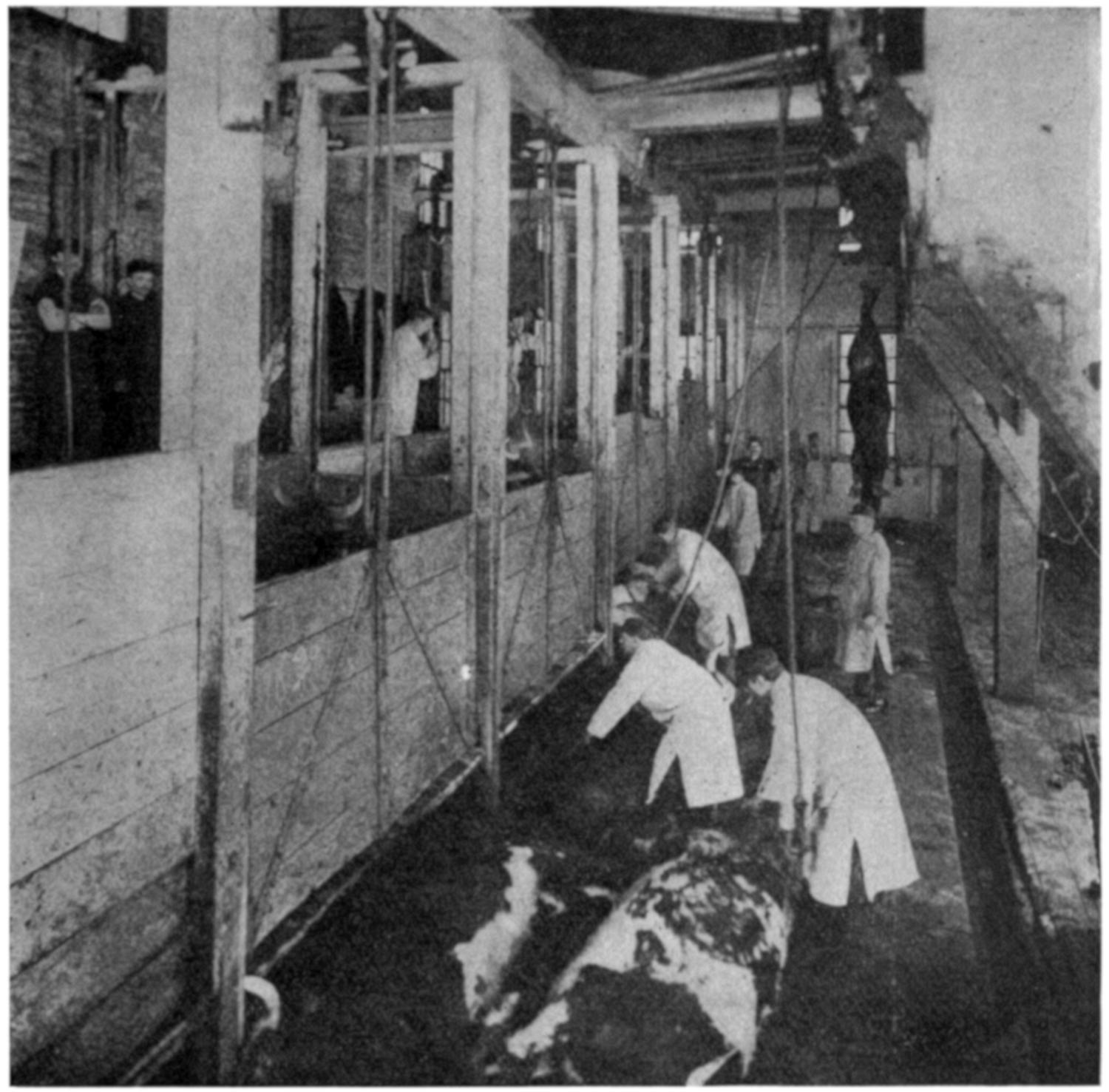
Immediately after the stunning a sliding door is hoisted and the stunned animal rolled out to be hoisted for sticking, heading, etc., as shown in Figs. 36 and 37.
Sticking.—In sticking great care should be taken that the throat is well opened, thereby giving the blood a free flow, also that in sticking both arteries and veins are severed, otherwise the beef will purge on the back and look discolored when finished. Care should also be taken not to stick cattle “through,” for if this is done, when the bullock is thrown on its back, the blood flows onto the chime bones, causing a bad discoloration.
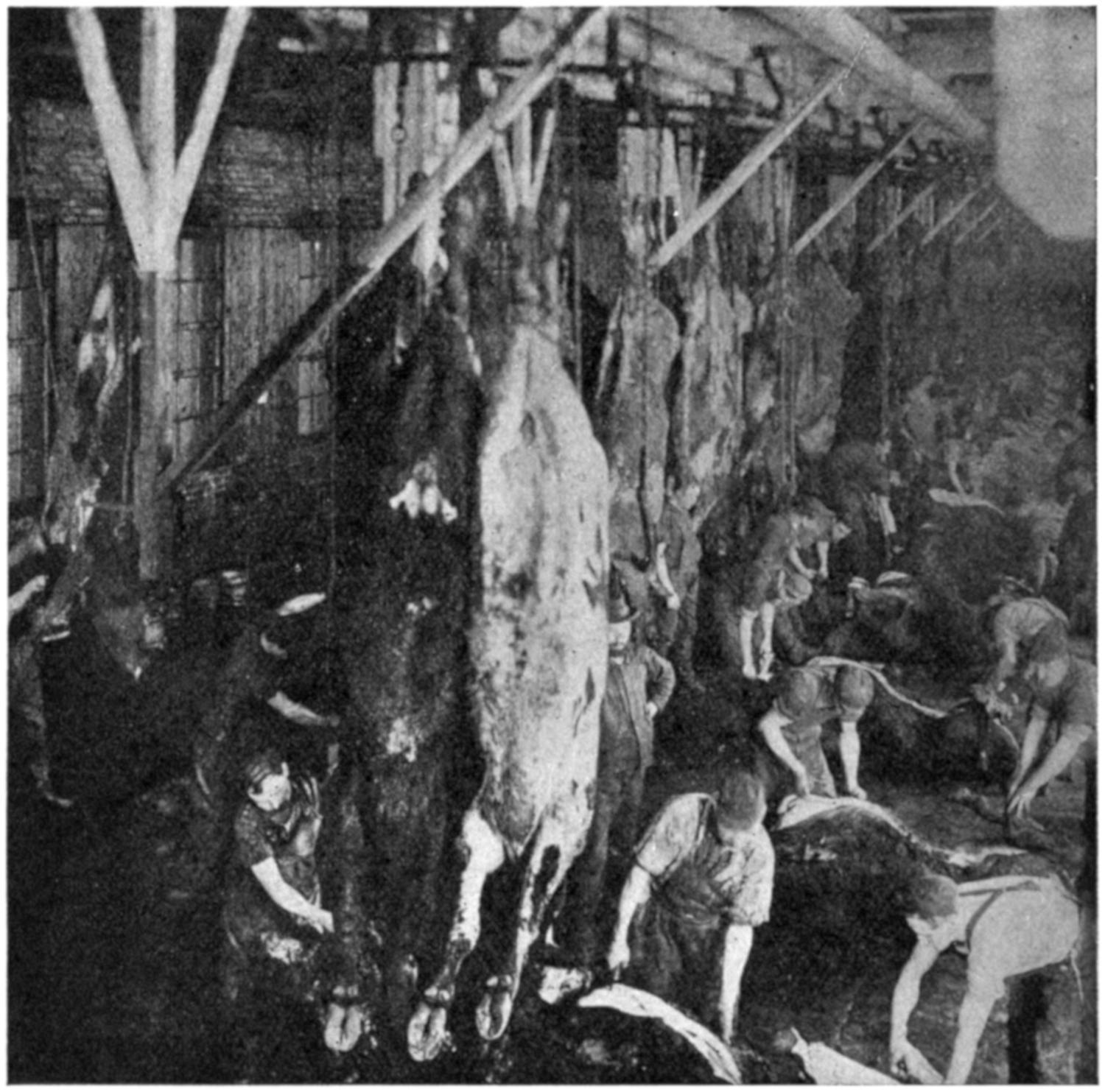
Heading.
—Care should be used to see that all the fat possible is left on the tongue, leaving it perfectly smooth on the outer surface; that as little hide as possible is left around the horns. The header, in cutting around the side of the head, leaves all the fat on the heads, and keeps as close to the side of the tongue as he can without injury to same; when this is done, the hide dropper can leave a full shaped neck, otherwise considerable meat which should be on the carcass is left on the head, where it is afterward trimmed and only worth tallow price. In taking the tongue from the head the trimmer should cut close to the jaw-bone, so that all the meat possible may be left on the tongue.
Pritch Sticks.
—For convenience in handling the carcasses on the beds, a pritch is used (See Fig. 38). This stick is arranged with a spike in one end and a ferrule on the other; used to hold the animal when rolled on its back. Pritches were formerly made with spikes at both ends. A spike should not be used on the end of the pritch coming in contact with the beef, as the spike often punctures the hide. The end of the pritch, which is to rest upon the floor should have a spike inserted. The end which is to support the carcass, should have a ferrule of 1¹⁄₂-inch pipe, roughened like a saw tooth, which prevents it from slipping and at the same time does not injure the hide.
Foot Skinning.
—Foot skinning is the term applied to taking off the feet. In doing this, cut around the hoofs closely. Do not open the hide any higher than necessary to unjoint the feet. If the shank is uncovered more than necessary, it is likely to become dirty, and it is impossible to make it clean if the tissue becomes stained. Be careful
to see that none of the cords from the front part of the shin-bone are left on the hide. The men skinning the front feet usually raise the gullet. In doing this they should be careful to open the neck straight from where the sticker left off, and guard against cutting the weasand. The gullet should not be raised too high with the knife when clearing, for if this is done, it allows the blood to run back on the ribs, producing the same effect as if the bullock had been stuck through.
Ripping and Leg Breaking.
—In this operation care should be exercised to see that the first cut is made exactly where the sticker left off, opening the breast and hide in the center the full length of the animal, in a straight line. Uncover the gam only sufficient to reach the joint, leaving the hide over balance of shank to protect it. In this way you get very much better shanks than if skinned too low. Cut closely to hoofs so all hide possible comes off around the feet, but that none of the cords are left on the hide.
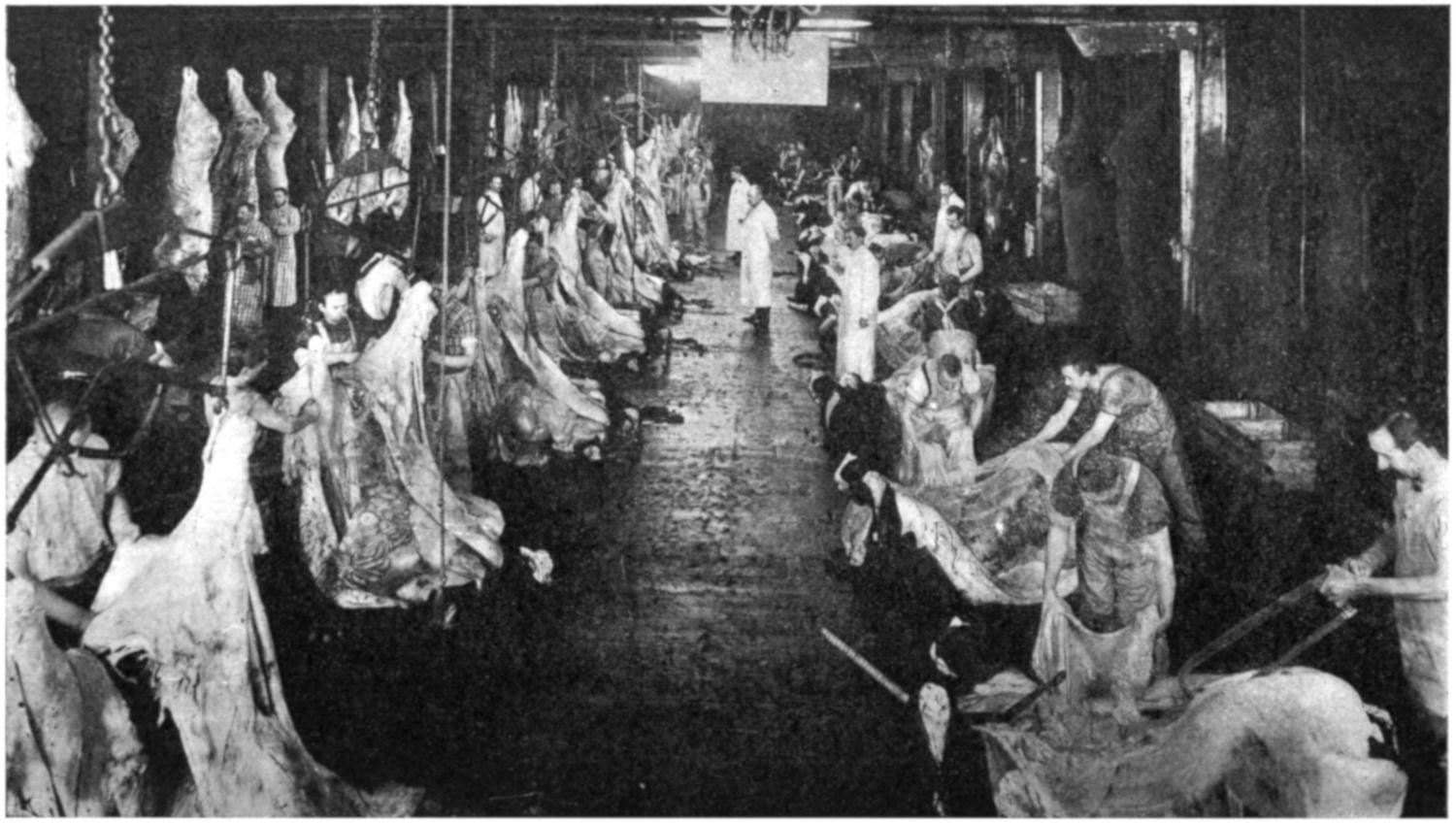
Flooring Cattle.
—This expression describes rimming over and siding the bullock. The special object of this operation is to attain a smooth hide without scores or cuts, smooth work on the bullock, which consists in saving the fell very carefully, clearing the rose on shoulder fully, also the saving of the fell back of the elbow and the forward shoulder. The latter part is a very particular point, as if the fell is not left it shows black upon chilling.
Breast Sawing.
In sawing the breast, it should be done centrally, holding saw at same angle as that at which the animal is lying, otherwise the saw works toward one side, and makes a very bad-looking brisket on one side of the beef. Saw where marked, otherwise it will become necessary to trim meat from the neck, if the marks have not been followed.
Caul pulling consists in taking out the caul in a tidy, cleanly condition, keeping same off the floor, and putting it into a box. Care should also be taken not to cut or tear the intestines, and if so, that they are immediately skewered.
Fell Cutting.
—Fell cutting consists in skinning the hide off the hind legs when animal is on the first hoist. The points to be carefully looked after in this work is to see that smooth work is done both on the hides and on the beef itself.
Rumping.
—This operation requires very skillful work, and calls for a great deal of attention. Points to be attained are a smooth hide free from scores or cuts, and smooth work on the beef. Care must be used in this work to see that the rumper keeps very close to the hide on outside of the leg, in order that the fell-beater may do good work. If the rumper is careless and breaks through the fell, it is impossible to carry this down smoothly. In working around the tail, care must be taken not to cut into the lean meat, especially on thin cattle, where there is comparatively little covering.
Fell Beating.
If the floorman and rumper do their work properly, it is comparatively easy to do a good job at fell beating. The fell-beaters should then use care to see that they do not tear
through, and, in marking with the chopper, to mark in such a way that they tear back instead of cutting off.
Gutting.
The objects sought for in this particular work are: First, cleanliness, and next, to save the fat smooth and without tearing it around the bones. The liver should be taken out without tearing. Special care should be used in cutting between kidneys, to open in the center without cutting tenderloin. Also to leave all tenderloin in the bullock, for, if any comes out with the “pluck” it is wasted. The workmen should also be careful about cutting intestines or weasands.
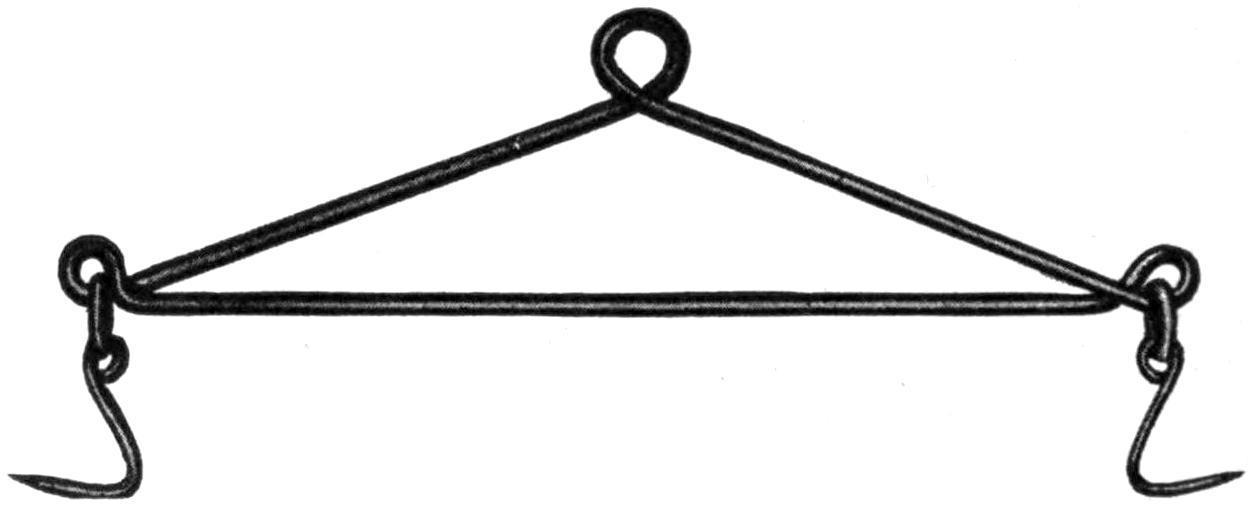
—The objects to be attained in this particular work, are: First, smooth hides, free from scores or cuts, at the same time leaving no fat on the hide, and next, particular care should be taken in the work required in the dropping of the hide to see that the fat is not removed from the loins.
The point in this work is to see that the saw is absolutely in the center, and that the first bone is sawed centrally. Better work can doubtless be done by sawing the tail from the rear, “popping” it twice.
—In slaughtering cattle it was formerly the custom to use an ordinary spreader as shown in Fig. 40, which spread all carcasses, large or small, a certain distance and kept them spread from the time they were hung until finished splitting. The spring beef spreader illustrated in Fig. 41, is a great improvement over this old spreader. When the cattle are first hung on this appliance the center piece is raised up, allowing the hooks to hang in a normal condition proportionate to the size of the animal which is hung on them. Hanging in this shape, the rumper is given a chance to do his work better.
Splitting.
—Great care should be exercised in this particular work, especially on “hard-bone” cattle. They should split the bone down centrally, the entire length of the carcass. Great care should be taken to see that they split the short fin-bone in the neck, thereby giving the neck-splitter a chance to start centrally with his work.
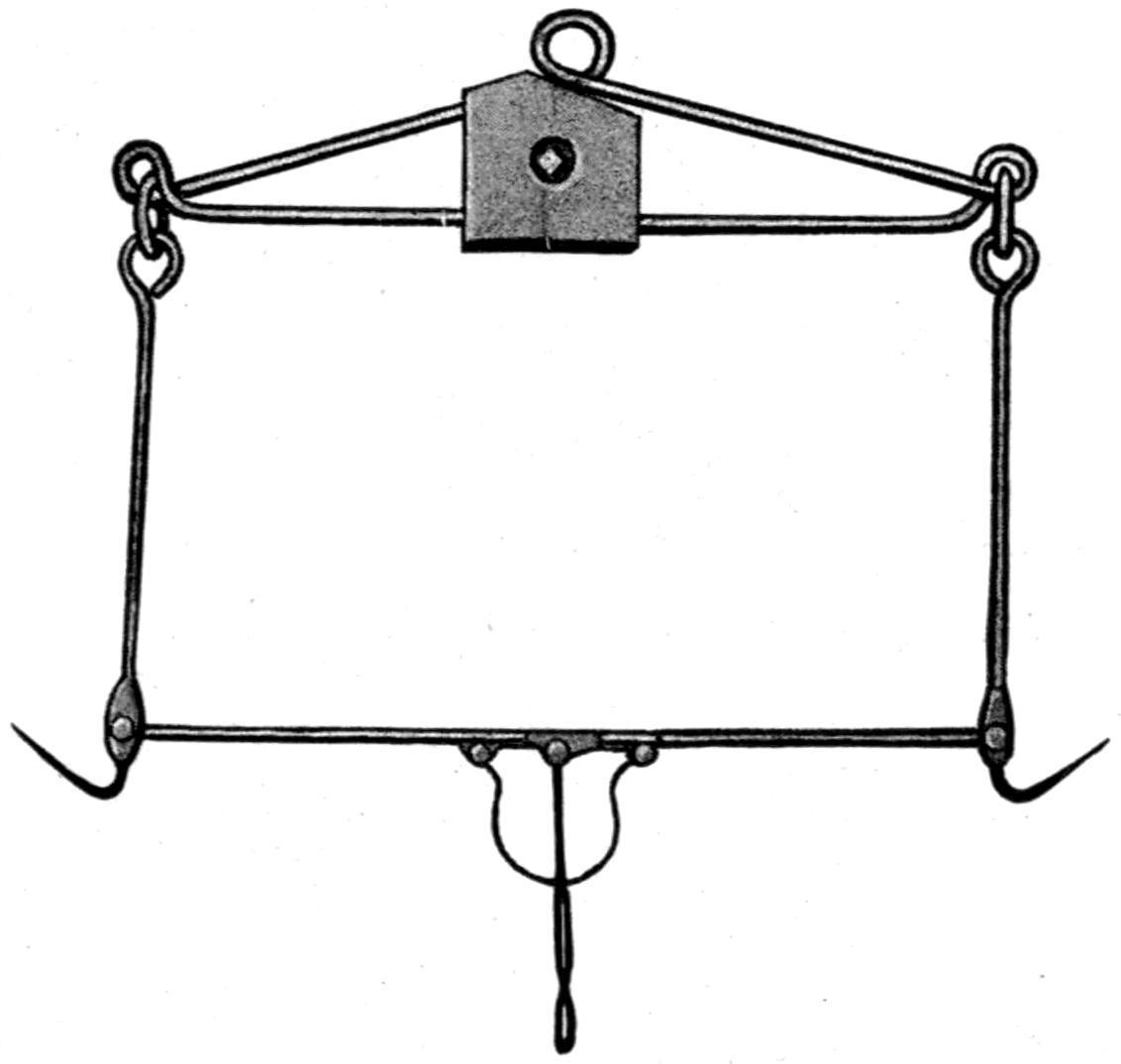
—Care should be exercised to see that these are in the very best condition to do the work. They should be ground as thin as possible, yet not so thin that they will shatter. If the splitters do not break a chopper occasionally, it is evidence that these are not ground as thin as they should be, and, unless they are, it is impossible to do good work in splitting. The workmen should, however, have choppers ground different thicknesses for
different boned cattle, and never use thin-ground choppers on cows or hard-boned steers.
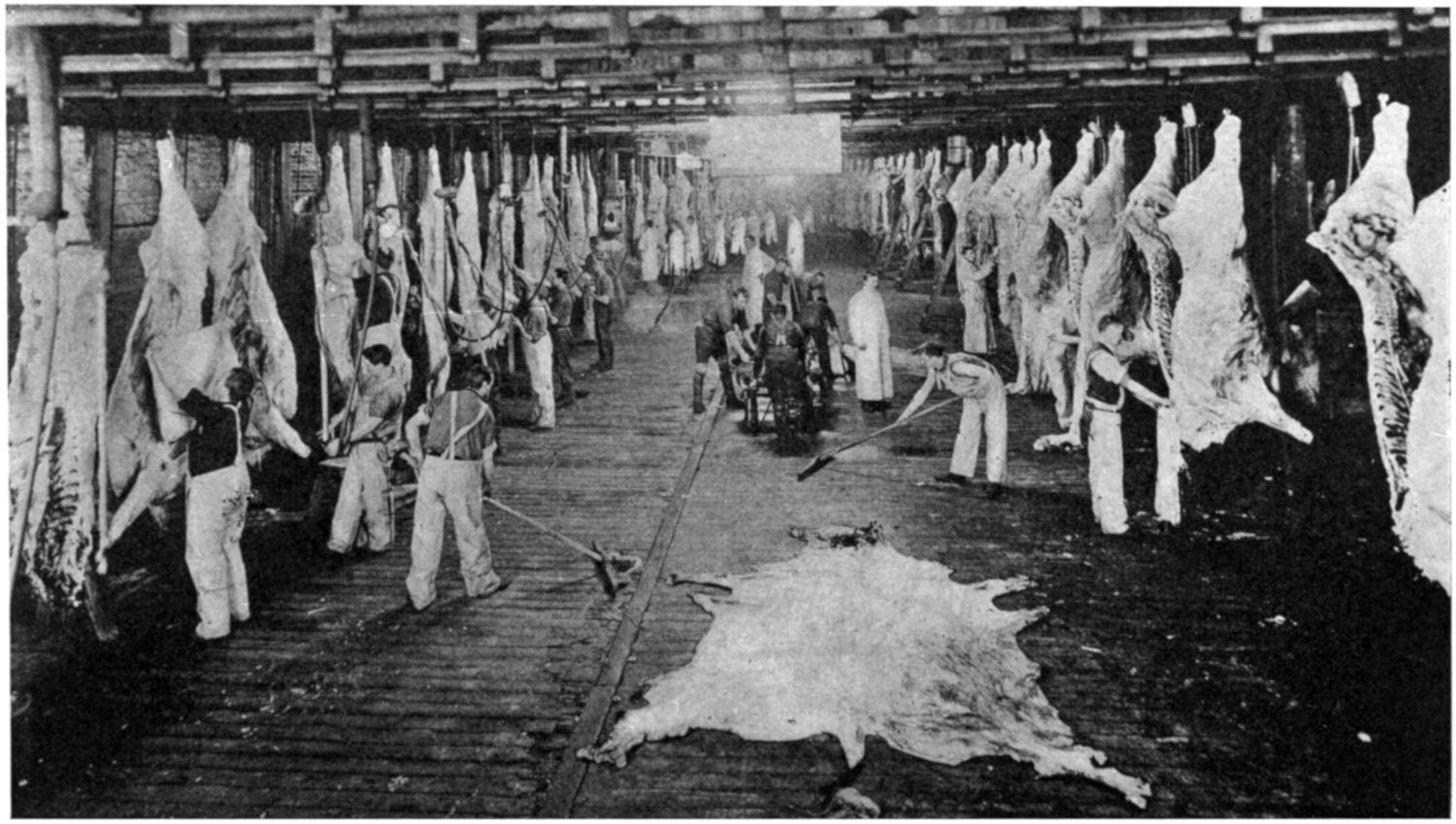
FIG. 42. VIEW SHOWING BEEF CARCASSES BEING SPLIT AND HUNG ON TROLLEY.
Clearing Out and Hide Dropping.
—In clearing the shanks the workmen should look carefully to see that they do not score the hide, or make any miscuts in the meat. They should also save the veins in the under side of forward shoulder, for when these are cut they continue to purge, making bad-looking shanks. In hide dropping care should be used to see that the workmen do not score or cut hides, make miscuts in the neck, or leave any unnecessary fat on the hide. They should also skin hides as low down as possible on the necks.
Neck Splitting.
This should be done carefully, splitting the neck fairly in the center. The last bone, or “deacon” joint, in the neck should be broken centrally, in order to give equal weights and appearance to the beef.
Bruise Trimming.
—This is a very essential feature in the dressing of cattle, and one in which good judgment must be exercised. It is, therefore, very hard to lay down any set rules further than the following: The object of trimming bruises is to take off all blood accumulations, and at the same time leave all the fat possible on the hips, etc., to be bleached out by using hot water and thorough wiping. The great danger, generally speaking, is that they are trimmed too much and scrubbed too little. These are points which require very careful attention.
Skirt Trimming.
Skirt trimming consists in cutting off the edge of the skirts evenly on native cattle without exposing the lean meat. On western cattle and thin stock, the skirts should be trimmed high enough so that they will expose the lean meat, which gives a chance for all moisture which has gathered under the film to escape, making the beef dryer than if otherwise trimmed.
Washing Cattle.
It will be noted that the carcasses are then separated into two pieces and should be thoroughly washed and scrubbed with fountain brushes to insure absolute cleanliness in every part. The washing and wiping should be carefully performed, and incidental to the washing is the scraping of slime from the back and shoulders previous to wiping. Many slaughter floors are now equipped with centrifugal wringers for wringing out boiled cloths and cleanliness is made paramount in handling beef.
In the washing of beef the work should start at the hind legs, the step-ladder men being the first to use water on the beef after it is split. Next, the back washers and wipers; after these, the neck and rib washers, the policy being to start at the top and clean the beef as they go along. The washers should be kept close up, handling the beef promptly, running it into the cooler as fast as it is dressed.
A convenient apparatus for washing carcasses is the fountain brush. It consists of an ordinary brush with a spray attachment on the front of it, as shown in Fig. 43. To this is attached a hose which supplies hot water from the vat above. When the men are ready to scrub the beef a valve is turned on, the water gravitating through the hose to the meat. In wetting it continuously
the blood or discoloration which may be gathered on the meat is rapidly taken off, leaving it in a bright, clean condition. The beef is then wiped with a cloth made of ten or twelve thicknesses of very coarse cheese cloth which rapidly absorbs the moisture.

Dressing Cattle.
—The mechanical labor of dressing cattle is about the same whether slaughtering ten or ten hundred, except in the former case the work would be performed by one man and in the latter by probably one hundred and thirty. The facilities for doing the work vary with the quantity and style of beds. Some beds are burdened with mechanical appliances where the apparatus more than counteracts any possible labor saving that can be effected. Common sense in this instance would indicate simplicity, as conveyors and mechanical appliances are costly for installation and for upkeep.
Dressing Conveyors.
—Dressing conveyors to take the animal after siding would, however, appear advantageous, since it permits of the concentration of the viscera for inspection and manipulation, and makes for facilities where the same can be handled to meet the regulations and avoid the troubles of food products touching the
floor on being trucked. These conveyor systems can be simple or complicated and each house requires treatment comparable with the quantity of business performed.
The type of killing beds, where the pens range across the building with one pen for each two beds, and a waiting pen where the drive can be moved forward for knocking, is, in the writer’s opinion, the least costly for standard operation, particularly if an automatic hanging-off arrangement is provided.
CHAPTER X DRESSING YIELDS AND CATTLE CUTTINGS.
YIELDS OF CATTLE YIELD FROM TWENTY-TWO NATIVE CATTLE YIELD FROM FIFTY-NINE TEXAS CATTLE YIELD FROM TWENTY HEAVY CATTLE YIELD FROM THIRTY-FOUR CATTLE PERCENTAGE OF VARIOUS CUTS BEEF CUTS DIAGRAM OF CUTTING GRADING LOINS RIBS ROUNDS CHUCKS PLATES, SHANKS AND FLANKS BARRELED BEEF.
Yields of Cattle.
The following are carefully prepared calculations made from data obtained in operation, showing yields of different products on several different lots of cattle. These were choice cattle in each instance and the average yield of the products is generally larger than would be the case with the ordinary run of cattle slaughtered. A perusal of the different tests given in the following pages will give the reader the average yield in different lines from the cattle handled, together with the value of the different items at time tests were made.
The prices were in vogue at the time of the original publication and while now obsolete are left for comparative purposes. The quantities and percentages would remain and can be used as a basis for present computations.
Yield from Twenty-Two Native Cattle.
The following tables show the yield in beef, hides and tallow and value of offal of twentytwo native cattle, the first in each test showing the weight and percentage of yield of beef, hides and tallow.
The yield of sweetbreads of twenty-two cattle was twenty-two pieces, weighing six pounds, valued at 20c per pound, total value $1.20. The yield in tripe was twenty-two pieces, weighing 420 pounds, valued at ¹⁄₂c per pound, total value $2.10. Total value of sweetbreads and green tripe, $3.30.
PERCENTAGE
TRIMMINGS
The product sent to tank room was 1,675 pounds green weight, the average per head being 76.14 pounds.
In figuring the value of the offal in the different tests the materials sent to the tank room are not taken into consideration. The blood from the twenty-two cattle was eight pounds per head of dry blood; total, 176 pounds; value, at the rate of $33.00 per ton, equals $2.90.
The sinews from the twenty-two lot was 1.93 pounds per head; total weight, 42 pounds; value at the rate of $19.00 per ton, equals 40c.
The fat from the twenty-two native cattle showed the following yield in oleo stock:
1,391 lbs. tallow = {
1,122 lbs. No. 1 stock = 80.00 per cent. 193 lbs. scrap tallow = 13.88 per cent. 76 lbs. waste = 5.46 per cent. 100.00 per cent.
The 1,122 pounds of stock showed the following yield in oleo oil and stearine:
IN OLEO OIL AND STEARINE.
Yield from Fifty-Nine Texas Cattle.
The total value of the offal of the twenty-two native cattle, including the tallow, was $182.67, an average per head of $8.30. —The following table shows the yield in beef, hides and tallow and the value of offal of fifty-nine fed Texas cattle:
PERCENTAGE OF YIELD OF BEEF, HIDES AND TALLOW.
The yield in sweetbreads was 59 pieces, weight 20 pounds, value 20c per pound; total, $4.00.
The output of tripe was 59 pieces, weighing 1,080 pounds, valued at ¹⁄₂c per pound; total value, $5.40. Total value of sweetbreads and green tripe, $9.40.
TRIMMINGS FROM FIFTY-NINE TEXAS CATTLE.
59
YIELD IN CASINGS FROM FIFTY-NINE CATTLE.
YIELD IN HEADS AND FEET FROM FIFTY-NINE CATTLE.
The yield in the tank room of fifty-nine Texas cattle was 4,466 pounds green weight to tanks, the average per head being 75.70 pounds.
The yield in blood of fifty-nine Texas cattle was eight pounds per head of dry blood; total, 472 pounds; value, at the rate of $33.00 per ton, equals $7.78.
The yield in sinews of fifty-nine Texas cattle was 1.87 pounds per head; total weight, 110 pounds; value, at the rate of $19.00 per ton,
The fat from the fifty-nine Texas cattle showed the following yield in oleo stock: 3,896 lbs. tallow = {3,169 lbs. No. 1 stock = 81.34 per cent.
539 lbs. scrap tallow = 13.84 per cent.
188 lbs. waste = 4.82 per cent. 100.00 per cent.
The above 3,169 pounds of stock showed in oleo oil and stearine:
YIELD IN OLEO OIL AND STEARINE.
The total value of the offal of fifty-nine Texas cattle, including tallow, was $531.78; average per head, $9.103.
Yield from Twenty Heavy Cattle. equals $1.04.
—The following tables show the yield in beef, hides and tallow, and the value of offal of twenty cattle, eight hides, classified as natives and twelve as spreadies.
The yield in sweetbreads from twenty cattle was: 20 pieces weighing seven pounds, valued at 20c per pound; total value, $1.40. The yield in tripe was 20 pieces weighing 420 pounds, valued at ¹⁄₂c per pound; total value, $2.10. Total value of sweetbreads and green tripe, $3.50.
The product sent to tank room was 1,626 pounds green weight to tanks, the average per head being 81.3 pounds.
PERCENTAGE OF YIELD IN BEEF, HIDES AND TALLOW.
YIELD IN TRIMMINGS FROM TWENTY CATTLE.
YIELD IN CASINGS FROM TWENTY CATTLE.
Yield
sinews
The fat from twenty cattle produced a yield in oleo stock of
The above 1,265 pounds of stock showed the following yield in oleo oil and stearine:
YIELD
IN
OLEO AND STEARINE.
The total value of the offal of above twenty cattle, including the tallow, was $203.61, an average per head of $10.1805.
Yield from Thirty-Four Cattle.
The following table shows the yield in beef, hides and tallow and the value of offal of thirty-four cattle:
PERCENTAGE OF YIELD IN BEEF, HIDES AMD TALLOW.
YIELD
FROM TRIMMINGS OF THIRTY-FOUR CATTLE.
YIELD FROM CASINGS OF THIRTY-FOUR CATTLE.
The yield in sweetbreads of same thirty-four cattle was 29 pieces, weighing nine pounds, valued at 20c per pound; total value of
$1.80. The yield in tripe was 34 pieces, weighing 710 pounds, valued at ¹⁄₂c per pound; total value, $5.35.
The yield in tank room of same thirty-four cattle was 2,665 pounds green weight to tanks, the average per head being 78.38 pounds.
Yield in blood of same thirty-four cattle was as follows: 8.6 pounds per head of dry blood; total, 292 pounds; value at the rate of $33.00 per ton equals $4.82.
The yield in sinews of thirty-four cattle was 1.44 pounds per head; total weight, 49 pounds; value at the rate of $19.00 per ton equals 46c.
The fat from the thirty-four cattle showed the following yield in oleo stock: 2,666 lbs. fat = {
The above 2,189 pounds of stock showed the following yield in oleo oil and stearine:
IN OLEO AND STEARINE.
The total value of the offal of these thirty-four cattle, including the tallow, was $356.80; an average per head of $10.497.
The foregoing records of tests will show the reader the actual value of the by-products figured at the time these tests were made. Owing to changes in the market prices, these figures are not correct for present conditions, but the percentage of yield and different
items are correct, and the reader can take any one of these tests and by substituting the market prices of today obtain figures of value.
These tests also give the percentage of the hide and tallow. The latter, as will be noted, is quite high, as it will be seen that the tests were made on a fairly fat grade of cattle.
Percentage of Various Cuts of Beef.
—Nearly every large city has its special ways and peculiarities of cutting meats, consequently the percentage of the different cuts varies largely. The following table is a record of results from a cutting test and shows the percentage of “Chicago cut” meat with square cut chucks:
Cuts—
The following table shows percentage on cattle cut Chicago style, with the exception of a “Kosher chuck” the latter consisting of fiverib, four-quarter cut-off from the side of the beef: New York Cuts (Natives)—
The following table shows the percentage on cattle cut Philadelphia style:
Cuts
The following table gives the result of tests and shows in detail the percentages in cutting canner cattle. As will be understood, for canning purposes, a light grade of animals is always used; cattle that are too light or too thin are always used for other purposes. In such cases the meats are always boned-out and the different cuts of the meat are here enumerated, showing their percentages:
Explanatory.
—Part of the data following and quoted in this chapter is from an excellent bulletin issued by the University of Illinois Agricultural Experiment Station, by Louis D. Hall. This is so clearly expressed and well illustrated that nothing need be added to the subject. The same is true regarding data shown on mutton and on hogs.
Beef Cuts.
—“Wholesale fresh beef” trade is about equally divided between carcass beef and beef cuts. The latter are sold both as “straight cuts” and as subdivisions thereof. The “straight cuts” handled in Chicago markets are Loins, Ribs, Rounds, Chucks, Plates, Flanks and Shanks (Fig. 44). The loin is separated from the round at the hip joint. The flank is cut from about the middle of the thirteenth rib to the opposite lower corner of the loin. The shank is sawed off just below the second knuckle (shoulder joint). The plate is cut off on a line extending from about the middle of the twelfth rib through the point at which the shank is removed. The rib and chuck are separated between the fifth and sixth ribs.
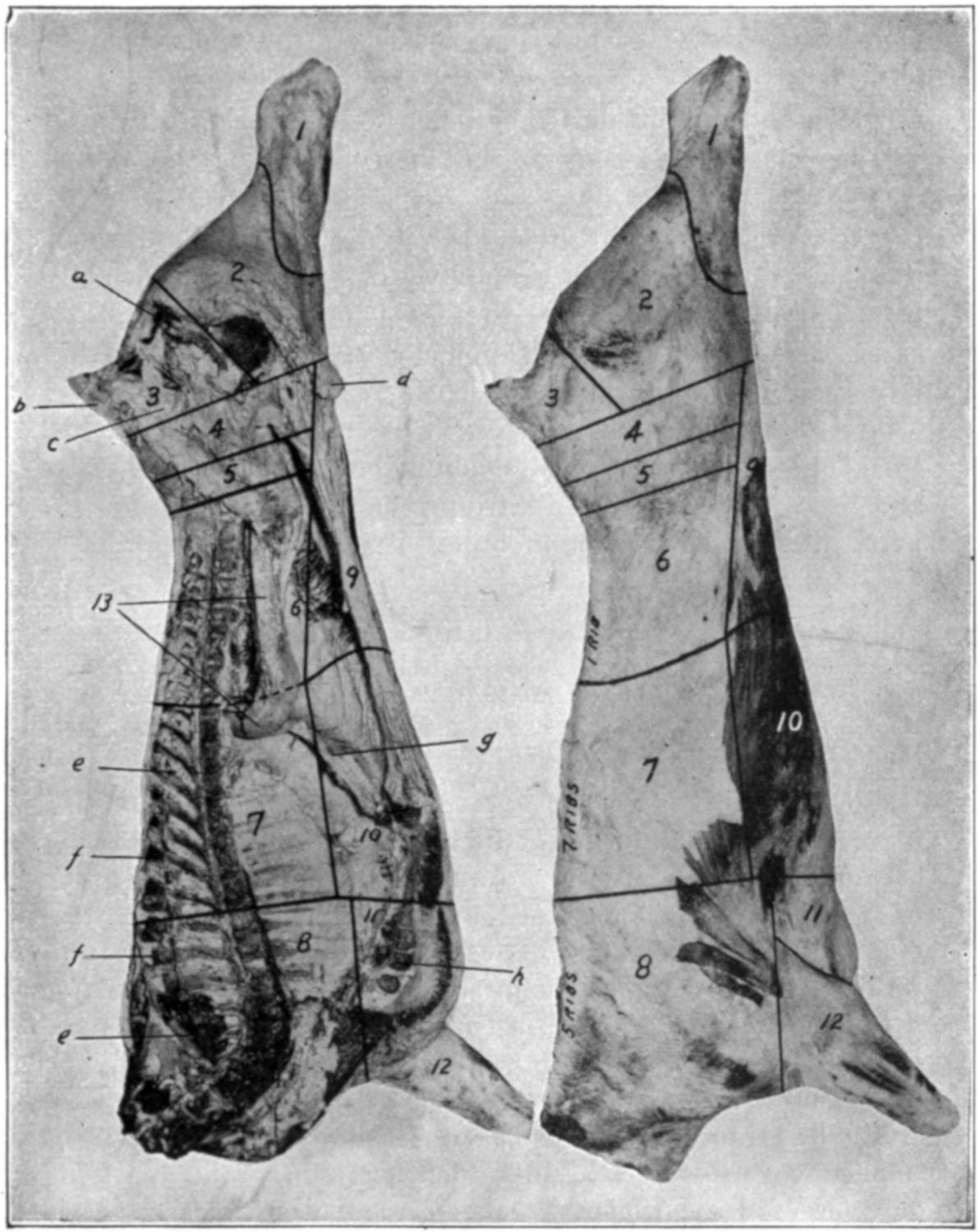
4, 5, 6. Loin
7. Rib
8. Chuck 9. Flank 10, 11. Plate
12. Shank 13. Suet 1. Hind shank
2. Round, R. & S. off 3. Rump 4, 5. Loin end 6. Pinbone loin
5, 6. Flatbone loin
10. Navel
11. Brisket
1, 2, 3, 4, 5, 6, 9. Hind quarter
7, 8, 10, 11, 12. Fore quarter
7, 8. Back
7, 10. Piece
8, 11, 12. Kosher chuck
8, 10, 11, 12. Triangle
a. Aitch-bone
b. Rump-bone
c. Crotch
d. Cod
e. Chine-bones
f. “Buttons”
g. Skirt
h. Breast-bone
The standard grades of straight cuts are No. 1, No. 2 and No. 3. Cuts that are too deficient in thickness and quality to be used on the butcher’s block, and which are consequently made into boneless cuts, barreled beef, sausage, etc., are termed “strippers.”
Diagram of Cutting.
—The page illustrating a diagram of cutting shows the “Chicago” method of dividing the animal if cut for sale.
Grading.
—“Weight affects the grade of a beef cut about the same as in grading a carcass. No. 1 cuts are principally from choice and prime 800 to 1,000-pound native steer carcasses and choice 750 to 900pound native cows; No. 2’s are largely from medium and good 650 to 800-pound steers and 600 to 750-pound cows; and No. 3’s are made chiefly from 450 to 600-pound common and medium cows, also from Texas and light Western steers. Stripper cuts are made from canners, medium and common bulls, Texas and common light Western cattle.
AVERAGE WEIGHTS OF STRAIGHT BEEF CUTS (POUNDS)
Grade Loins Ribs Rounds Chucks Plates Flanks Shanks
No. 1 50-85 30-50 75-110 75-110 40-80 15-20 10-20 No. 2 40-60 25-35 60-80 60-80 30-50 10-15 5-10
No. 3 25-40 20-25 40-60 40-60 20-35 5-10 5-10
Strippers 20-30 15-20 30-40 30-40 15-20 5-10 5-10
Loins.
—“The loin is the highest-priced cut of the carcass because of the tenderness and quality of the lean. The grade of a loin may be determined by marked excellence or deficiency in either thickness, covering or quality, or by a uniform degree of development in all respects. No. 1’s must have a full, well-rounded shape, a complete covering of white fat, the thickness of which is in proper proportion to the lean, and bright, firm, fine-grained, well-marbled flesh. No. 2’s are generally less rounded in form, with insufficient, excessive, or uneven covering and a slight deficiency in grain, marbling or color of flesh; while No. 3’s are more flat in shape, nearly or entirely lacking in covering of fat and very deficient in thickness and quality of flesh, but sufficiently developed to be cut into porterhouse and sirloin steaks for cheap trade (Fig. 45). Stripper loins have no outside fat and are usually extremely flat and rough in shape, with dark-colored, coarse-grained flesh, and hard, white bone.

FIG. 45.—A. FLAT BONE LOINS, NO. 1, NO. 2 AND NO. 3 GRADES. B. REGULAR LOINS, NO. 1, NO. 2 AND NO. 3 GRADES.
